Workshops discuss endowment
Clara Alger, Emma Brown Managing Editor, News Editor
On Jan. 30 and 31, Vice President for Finance and Administration Bryan Swarthout held a series of workshops on the College’s endowment operations in an effort to enhance transparency about the decision-making process. He was joined by Rachel Kort, Managing Director and Co-Head of Portfolio Management at Hall Capital, to help explain what the company does for Vassar and how they make decisions. Hall Capital, a financial consultant firm which manages around $45 billion in assets for foundations, endowments and a subset of the top one percent of the wealthiest families, was recently acquired by the wealth management firm Pathstone, and Kort attended as a representative from Pathstone.
Workshops were attended by students and faculty alike, and the groups were kept to under 20 people to ensure time for questions and answers. Each session ran about 45 minutes long. In an email correspondence, Swarthout wrote, “About 175 people signed up for the 10 sessions. Those in attendance asked good questions which I think helped with our goal of improving understanding of the endowment.”
Workshop attendee Carmen Skinder ’26 noted, “I went because I think the lack of transparency around the endowment and the way Vassar composes their funding
makes it really hard to exercise the supposed rights students have to advocate for change in the financial world of the College.”
The workshops emerged from negotiations between the College and Vassar Popular University for Gaza (VPU) to dismantle the encampment on Library Lawn. One of the listed responses to VPU’s demands was increased transparency about Vassar’s finances.
Another agreement on the signed contract was President Bradley’s assistance in providing a platform for students to present a proposal on the divestment from military and surveillance companies in front of the Vassar investment committees. The proposal was considered by the Campus Investor Responsibility Committee (CIRC) in May 2024 and the Trustee Investor Responsibility Committee (TIRC) in Oct. 2024. Yet on Dec. 2, 2024, the Board of Trustees (BoT) announced through an email to the Vassar community and a post on their website that the College would not divest. The decision came before TIRC could make their full recommendation to the BoT, which was scheduled for February.
In the statement, the BoT wrote that while Vassar will not divest from military investments, “The Board did, however, decide to enhance transparency about the policies and practices that govern our stewardship of the endowment.” In response to the
Retreat names llardi Head Chef
Emma daRosa Columnist
Vassar recently hired Dawn Ilardi as the new Head Chef of The Retreat after her predecessor, Brad Goulden, retired after over 20 years of service at Vassar College. Ilardi is the first woman to hold the title of Head Chef at Vassar since 1864, and the first ever woman to be Head Chef at The Retreat. I recently had the opportunity to sit down with Ilardi to discuss her path to becoming the Head Chef, what it is like to cook professionally as a woman and a mother and where to get the best chimichangas in Poughkeepsie—read to the end for her recommendation. Ilardi taking over the position represents a new era for The Retreat and one that she is very excited to share with all of us on campus.
Ilardi grew up surrounded by food and cooking. “It’s in my blood. My dad’s like an old school butcher, my family had an Italian specialty catering store for about 40 years,” she told me. Despite a childhood full of food memories and people cooking all around her, Ilardi did not fall in love with the idea of professional cooking right away. After high school, she attended Hartwick College in Oneonta, NY. She received a bachelor’s degree in sociology during the 2008 economic recession, hoping to get a master’s in social work next and work with at-risk youth. It did not work out quite like that. Ilardi told me, “I woke

up after unpacking from college and had no idea where I was going, didn’t know what I was gonna do, I was very discouraged. My
VSA passes Free Laundry Bill Chiefs, Eagles set to battle
Julian Balsley Assistant News Editor
Starting in the Fall 2025 semester, student laundry costs will be included in tuition. Under the Free Laundry Bill, passed by a unanimous Vassar Student Association (VSA) Senate vote on Sunday, Jan. 26, the VSA will allocate $10 per student from the Student Activities Fee—the VSA’s primary funding source, which all students pay—to cover the cost of laundry. Under the bill, students will be able to do unlimited loads of laundry for no extra charge, regardless of financial aid status. Currently, washing and drying one load of laundry costs $3.60, and under the current non-free laundry model, if students only wash and dry one load per week for 30 weeks, they would spend $108; if they wash more than one load per week costs quickly become much higher. To go into effect, the bill must be approved by the Board of Trustees (BoT) at its meeting later this month. VSA Vice President Miles Harris ’25 told The Miscellany News, “We don’t foresee any resistance there.”
The road to free laundry has been long and rocky. In 2022, the VSA Senate passed the Vassar Washing Allocation for Student Health (VWash) Act, which gave Work Study students $33 per semester to cover laundry costs but did not include a proportional increase to match inflation. Last semester, the Senate passed the VWash Expansion Bill, increasing
the VWash stipend to $46.80 for students to wash and dry one load of laundry per week for the full semester.
A key component of the Free Laundry Bill is that it applies to all Vassar students. Under both previous VWash bills, only Work Study students received VWash. The Free Laundry Bill includes unlimited laundry to both students with and without Work Study.
Harris emphasized how long VSA has been negotiating student laundry with administration: “It’s been a far off goal that has been like, toyed with or thought about for a long time, and we weren’t expecting to get it this time around as well, which is why we got the VWash expansion, but we were able to work something out, which was fantastic.”
VSA Senator Ian Saunders ’28, who wrote the VWash Expansion Bill last semester, explained, “After we passed the bill, the first one, VWash Expansion, we were like, okay, my thought process was that if we could pass that we can get free laundry.”
After the expansion bill negotiations, Harris said, “The College came back to us and said, ‘Hey, we have a way that we would be able to do tuition including laundry. VSA would have to contribute some of its funds in order to make that happen.’ And we were very happy to sign on to that plan.”
In November, The Miscellany News reported that during negotiations for the expansion
The Kansas City Chiefs and the Philadelphia Eagles are officially heading to New Orleans to compete in the Super Bowl LIX, and most NFL fans could not be more upset. The Chiefs’ pure dominance over the past five seasons, coupled with their seemingly unnatural amount of “lucky” plays (allegedly biased officiating), has led to the majority of the country viewing the Chiefs as the villains of the league. The cherry on top for the team’s haters has been star Kansas City tight end Travis Kelce’s very public relationship with international superstar Taylor Swift, with the increase in Swift-centric NFL coverage sparking undue hate comments rife with not-so-subtle misogyny.
The Eagles have also been fairly dominant in recent years, but the main fuel for Eagles haters is their outlandish superfans. Super Bowl LII in 2018 was the last time the Eagles hoisted the Lombardi trophy after winning in improbable fashion over Tom Brady’s heavily favored New England Patriots. Eagles fans “responded” to this victory by trashing and rioting through the entire city of Philadelphia. Some fans even climbed streetlights and traffic lights, leading to the mayor of Philly having to grease the poles of the city and introduce heavy security measures. In a recent poll, the majority of NFL fans select-
ed “meteor strike” as their desired outcome for the Super Bowl, over either of the teams winning.
Analysis of outcomes:
This marks the Chiefs fifth Super Bowl appearance in the past six years, and they could potentially become the first NFL team in history to win three straight super bowls. This would be superstar quarterback Patrick Mahomes’ fourth ring, cementing him as a top-three quarterback of all time and putting him in the same conversation as the NFL GOAT (Greatest of All Time): Tom Brady. The Chiefs would tie the Dallas Cowboys and San Francisco 49ers for second place in total franchise Super Bowl wins with five. For the Eagles, this is their second Super Bowl appearance in the last three years after their crushing loss in Super Bowl LVII to the same foe: Kansas City. This time, two years ago, Jalen Hurts and the Eagles were preparing to cap off an incredible 14-3 season with a Super Bowl win. After an extremely back and forth three quarters, the Eagles led the Chiefs 27-21 heading into the fourth and final quarter, and things looked bright. The Chiefs stormed back scoring two quick touchdowns, and led 35-27. The Eagles then tied the game with a touchdown and two-point conversion, leaving the ball in the hands of Patrick Mahomes and the Chiefs. In the end,
Need an album recommendation to get you through the day? Check out Brendan Kennedy’s review of “Eusexua.”

Soren Fischer discusses the paradox of tolerance and its impact on public discourse.

In the U.S.,LeagueOne Volleyball is changing the game, as detailed by Holland Kaplan. 5


THE MISCELLANY NEWS
EDITOR-IN-CHIEF
MANAGING EDITOR
SENIOR EDITORS
CONTRIBUTING EDITORS
NEWS EDITORS
ASSISTANT NEWS EDITOR
ARTS EDITOR
ASSISTANT ARTS EDITOR
FEATURES EDITORS
OPINIONS EDITOR
HUMOR EDITORS
ASSISTANT HUMOR EDITOR
SPORTS EDITOR
ASSISTANT SPORTS EDITOR
DESIGN EDITORS
ASSISTANT DESIGN EDITORS
COPY EDITOR
ASSISTANT COPY EDITORS
GRAPHICS EDITOR
ASSISTANT GRAPHICS EDITORS
GAMES EDITORS
SOCIAL MEDIA MANAGERS
LIVE EVENTS CHAIR
WEBMASTER
REPORTERS/COLUMNISTS
CARTOONIST
COPY STAFF
Allen Hale
Clara Alger
Maryam Bacchus
Carina Cole
Lev Winickoff
Jacques Abou-Rizk
Jesse Koblin
Charlotte Robertson
Nicolas Villamil
Emma Brown
Sarah McNeil
Julian Balsley
Emma Adams
Madeleine Nicks
Yaksha Gummadapu
Luke Jenkins
Soren Fischer
Oliver Stewart
Nicholas Tillinghast
Josie Wenner
Henry France
Casey McMenamin
Ellie Kogan
Lucas Seguinot
Amelia Gracie
Holland Kaplan
Darja Coutts
Kathryn Carvel
Grace Finke
Tori Kim
Annie McShane
Berk Meral
Sadie Keesbury
Felix Mundy-Mancino
Miranda Liu
Zoey Ojalvo
Fallon Dern
Kai Chang
Jordan Alch
Eduardo Culmer
Ben Kaplan
Sydney Jones
Anna Kozloski
Ian Watanabe
Andrew Chu
Sadie Baken-Durchslag
Paige Hahn
Quinn Kou
Angela Moon
Tess Novack
Edward Welch Morgan
CORRECTION POLICY
The Miscellany News is not responsible for the views presented within its Opinions pages. Staff editorials are the only articles that reflect the opinion of a two-thirds majority of the Editorial Board.
Endowment workshops generate criticism, questions
Continued from Endowment on page 1
BoT’s statement, the VSA (Vassar Student Association) sent an email to students on Dec. 6 condemning the BoT’s decision not to divest from military and surveillance, highlighting concerns about financial and administrative transparency, as well as implications for campus life. The VSA stated that, “Without action, the palpable divide in our campus community will continue to fester.”
“We got a lot of response and feedback from students [after sending the Dec. 6 email],” shared VSA President Emily Doucet ’25 in an interview with The Miscellany News. “I got over 40 responses to that email and very thoughtful, written out conversations and accounts from both sides of the argument. There was definitely far more students in favor of divesting, but that number wasn’t 100 percent.”
In the days leading up to the workshops, some students expressed their desires for transparency about the companies and funds that Vassar has invested in, in addition to their hope that their voices would be heard by those in charge of making decisions about the endowment.
“I don’t think we’ve ever had an opportunity like this as students or even as senators,” said VSA Senator Gene Waddy ’27. “I really want to apply pressure to whoever it is that’s going to be in front of us from that company.” VSA Senator Charlie From ’25 added, “We want more avenues to pursue some form of divestment.”
Swarthout and Kort began the sessions by showing a slideshow presentation, starting with a graph of the operating budget, 30 percent of which is taken from the endowment. Swarthout placed special emphasis on the endowment’s importance in making financial aid possible, using the graph to show that the total size of the endowment is roughly equivalent to the revenue the College would receive if all students paid full tuition. In his email correspondence with The Miscellany News, Swarthout shared, “Vassar’s mission is to enable the most students access to a Vassar education and to prepare them to address the complicated
problems of our time.”
Many students who attended the workshops were dissatisfied with the focus on financial aid as a crux point of the endowment. Skinder noted, “I think it surprised me how much financial aid was utilized as a reason that the College couldn’t divest, because I sort of assumed that they would be more transparent about the workings of the College or put financial aid at a more untouchable point in our funding as a school.”
Doucet expressed similar frustration, saying, “The student financial aid piece is a really important part of the story that I don’t want to minimize, but I don’t like that it’s being weaponized in that way.”
A new endowment website launched this week as part of transparency efforts reveals that 34 percent of Vassar’s endowment is spent on financial aid, with “instruction” as the next biggest expenditure at 32 percent.
Once the importance of the endowment was addressed, the presentation turned to how the endowment is managed. As an advisory firm, Pathstone employs a team to vet and select a variety of asset management firms which distribute Vassar’s $1.3 billion endowment. These could range from public equity firms, to real estate, to private equity and venture capital. Kort emphasized the importance of a diverse portfolio to reduce volatility, which the workshop presentation defined as the measure of how much the price of an investment fluctuates.
The endowment’s asset allocation is newly available on the website, but the exact investment policy is not. Swarthout wrote, “The investment policy statement is an internal document developed in collaboration between the Investments Committee of the Board and Pathstone to ensure agreement on the approach to investing.”
In 2021, the BoT announced the establishment of an investment policy with Environmental, Societal, and Governance (ESG) considerations. Most notably, this included the decision to abstain from any direct investments in fossil fuels. The official BoT message to the Vassar community noted, “This policy incorporates an evalua-
tion of environmental considerations, sustainability of business models, corporate governance structures and practices, and social issues into the investment review process. The investment firm that manages the endowment with our oversight, continues to put this ESG lens on all potential investment managers.”
In the workshops, Kort addressed the divestment from fossil fuels, explaining that once sources of renewable energy became more reliable and financially successful, fossil fuels were no longer the same sure hedge against inflation. One anonymous attendee from the Class of 2026 who was involved in the divestment proposal commented on this explanation, saying, “That was a good enough reason for them to divest from fossil fuels, and with military and surveillance technologies, it’s like war is profitable at the end of the day.” Swarthout summarized, saying in the workshop that the move to divest from fossil fuels was both an ESG consideration and due to the fact that it was no longer considered sustainable revenue.
The Dec. 2 BoT statement, which expressed their opposition to weapons and surveillance technology divestment, said, “Even limited exclusionary changes in the composition of our investments would reduce our access to investment managers, potentially compromising the long-term return of the endowment.” In a workshop Swarthout echoed this idea, adding, “Top managers don’t want to be constrained.”
“It seems like there’s a pretty unanimous feeling that these workshops were not there to provide the information the campus was asking for,” said VSA Vice President Miles Harris ’25. “And when pushed on those issues, there was an unwillingness to say the cruel, true thing that is motivating a lot of the decision-making: the board has found it financially too difficult to invest ethically at the request of the faculty and students alike.”
In her conversation with The Miscellany News, Skinder said, “We’ve been told that managers won’t like it if our ESG standards are updated to be more constraining, and
for that reason, they wouldn’t take on the portfolio. But at the same time, if universities are some of the only institutions engaging in private equity funds like we are, then it seems like we have more power than they’re letting on in terms of that market, because individuals aren’t investing in the way the universities are.”
From commented on this environment, sharing, “I think corporate transparency, the idea that you come to a result and you explain or you give a rundown of the process after the fact, I don’t think that’s any actionable transparency. We can’t do anything with that.”
In one meeting, a student proposed a hypothetical situation involving a baby-crushing machine that was highly profitable and socially acceptable. They questioned whether Vassar would invest in it or if they would refuse to invest in something so removed from the institution’s values. Swarthout responded with a discussion about investments, explaining that good asset managers with an ESG lens would realize that the machine would one day become illegal and would not be a good longterm investment.
The anonymous student from the Class of 2026 expressed frustration with this language, commenting that while they understand Vassar is a business and they have a fiduciary responsibility, they would like to see the College engage in value-based actions and be a model for others. They remarked, “I think it’s really important for Vassar to not only talk the talk, but walk the walk.”
Despite the workshops’ efforts towards transparency, Doucet believes many questions remain unanswered, namely which third-parties manage the endowment. In response to this question, Swarthout wrote, “As we discussed during the sessions, Pathstone has a specialized team focused on identifying, conducting diligence and monitoring the managers with whom to invest. This requires a lot of time and effort and the result of that work is proprietary and not public. This is standard practice in investing.”
Free laundry awaiting approval from Board of Trustees
bill, the administration seemed unwilling to consider free laundry because the tuition increase would drive Vassar’s tuition even further above its sibling institutions, perhaps to over $100,000 per year. Because the VSA agreed to allocate $10 per student from its budget, this is no longer a problem. Vice President for Finance and Administration Bryan Swarthout told The Miscellany News by email, “This bill will not affect the total cost of attendance at Vassar.”
VSA Senator Charlie From ’25, who authored the Free Laundry Bill, wrote, “A wave of colleges around us are announcing similar programs, so it’s due time for it.” Saunders noted, “We first gathered up all of this research, and we found out almost all the other sister schools have free laundry… I think the research did really put into perspective, for administration, just having that backbone of saying, ‘This is what it’s like at Vassar, but also this is what it looks like at other schools that are very similar to Vassar. And why aren’t we following this when we are charging a lot more money, and for some reason, we don’t have the same resources that these other schools do that are charging a lot less.’” Swarthout noted, “We are aware that some peer institutions do not charge for laundry
but it was not a driving force for the decision.”
Dylan Berman ’28 commented, “[This is] long overdue. Because why am I paying for that?… Why am I as a person going to this school and paying all this money and not having laundry as part of what I’m already paying for?”
For From and Saunders, this is not the end.
“There’s always work to do,” From wrote. “Personally, I think we need a student within each house to be tasked with contacting machine maintenance whenever machines break down. There was a model like this in Cushing three years ago where the HFI [House Fellow Intern] put up sheets where students could rate how well the machines worked so they could relay that to the maintenance contractor which worked great.” Saunders also touched on machine upkeep: “I think now would be just the maintenance of the washers and the dryers. I know that’s a very big issue, especially at the THs [Townhouses] and the TAs [Terrace Apartments] and people having to dry their clothes multiple times.”
Harris explained, “It seems like the College is working to renegotiate their contract and find a different laundry provider in the coming years.” A new contract may bring new washing and drying machines, making continued maintenance easier. “Because they’re
changing companies, that might happen, that might not,” Saunders stated. “I’m not 1,000 percent clear on that.”
From emphasized that the fight for free laundry did not only occur within the VSA Senate. “While the VSA plays an important role in negotiating a compromise on this matter, they neither have a monopoly on student
activism, nor are they a sustainable model for student activism in general,” they said. “Free Laundry was won not only by the VSA, but by the students who kept complaining to the Deans, by the WSC [Working Student Coalition] members lobbying BoT members at the House dinners, and by so many people who came before our time.”

Indie rock band flipturn releases explosive second album
Darja Coutts Copy Editor
Looking for a feel-good, summery album to get you through the gloomy winter? Look no further than flipturn: a Florida-based indie rock band most known for their electric live performances and their 2018 song “August.” The group got its start as a garage band in 2015, when it was created by guitarist and lead vocalist Dillon Basse, lead guitarist Tristan Duncan and bassist Madeline Jarman. Later joined by guitarist and synth player Mitch Fountain and drummer Devon VonBalson, flipturn has released a handful of EPs over the years as well as their spectacular debut album “Shadowglow” in 2022.
As a result of the “Shadowglow” boom, flipturn toured for several years, playing at iconic venues and festivals like Bonnaroo, Lollapalooza and Governor’s Ball. The mix of their passion to share their stellar music with fans and love for their home state amidst exhaustion from non-stop touring is cited as the inspiration behind their sophomore album “Burnout Days.” Recently released on Jan. 24, flipturn explores this issue, but also codependency, self-esteem and friendship.
The opening track “Juno” kicks off with an addictive synth riff from Fountain that sets the experimental tone of the album. The Oct. 24-released music video pairs perfectly with the lyrics and demonstrates their hectic but
meaningful life on the road. In the video, the band travels between dingy dressing rooms, awkward shows and the side of a highway after their tour van “Peggy” broke down. However, they jam out together in every chorus to, “Tripping through the timeline / Making the doves cry / Yeah, you say you’re doing just fine / Enjoying the joyride.” flipturn further plays around with their sound in “Rodeo Clown”— Basse’s sugary voice floats above Fountain on synth and VonBalson’s punchy drum beats. Dreamy is the best word to describe the track, as the ecstasy of putting on a show for those around you is a recurring theme in the lyrics. Staying in line with drug-induced states, “Inner Wave” is a catchy song that references taking mushrooms and questions relationships as the sunshine-like guitar transports the listener to the summer.
“Sunlight” is undoubtedly one of flipturn’s most personal tracks with lyrics that admit, “Everyone’s been asking me / Honey, how you gonna handle yourself / Looking at the family tree / It might be something that you’re dealt.” Basse wrote the song after watching his sister take their mother to rehab, and towards the end, it builds and takes on a grungy edge as VonBalson kills it on the drums and Duncan’s signature guitar sound distorts. Following that, the contrast of short, choppy phrases and long, dreamy sounds in “Moon Rocks” suits the image of two friends smoking together on a porch, breathing in and out as
they hash things out.
After a sharp cut-off, the sixth track “Right?” takes a step back to question things, alternating between a low, gritty electric guitar in the verses and a clear, driving acoustic guitar in the choruses. Everything comes together in a smashing finale to this song of self-doubt as Basse ends with the haunting lines “You feel adored / You gave everyone everything that they’ve been asking for / That’s all you’re asking for / Right?”
“Right?” complements the more intimate track that is “Window,” with its charming acoustic guitar, Jarman’s steady bass and subtle vocals as Basse croons about opening up to new love. Similarly, “Swim Between Trees” is a sweet ode to romance with lyrics like “My mind’s a river draped with leaves / And you’re still swimming through the trees.” Towards the end of the song, Fountain’s synth solo takes center stage before Basse returns with his iconic sing-songy vocals. “Tides” starts off calm like its two companions beforehand, but eventually builds to a classic indie rock track with Duncan’s stunning guitar work and VonBalson’s toe-tapping drums as the band emphasizes their love for Florida.
The 10th track, “Reason to Pretend,” and penultimate song, “If It Is,” both tackle themes of codependency. The former asks in a very bitter manner, “Did I give you something to cry about? / No, you loved me a healthy amount,” as if the singer wishes they
could love someone adequately instead of in the all-consuming manner they are used to. Jarman’s strong bass is a stable backdrop for a guitar line that serves as a fun thread through the whole track. The track “If It Is” opens with intimate vocals amidst a driving guitar that shifts to include deep, guttural notes on the piano. Meanwhile, Basse opens up about the loneliness that can come from codependency.
“Burnout Days,” the final and title track, is a classic flipturn track that shows off their signature sound: Basse’s stunning vocalizations, a strong foundation from VonBalson and Jarman and addictive guitar from Duncan and Fountain. Seen on the album cover, the band utilizes the image of a supernova in the lines, “Supernova glowing from your spirits baby blue / In the heart of a dying star, through the dark / I saw you.” With this picture in mind, this track is the perfect way to end the album, leaving you on a high and wanting more. Since I have loved flipturn for years, seeing how much they have grown on “Burnout Days” is incredible. I really appreciate how transparent they are about burnout and its impact on artistic creation. But at the same time, the band is earnest about loving what they do with every fiber of their being, as evidenced by their recent experimentation with vocals, instrumentation and style. Go give them a listen, because like a supernova, flipturn is truly explosive.
‘Outer Banks’ is a show full of adventure and found
Aurora Rose Horn Guest Columnist
[SPOILERS AHEAD]
Whenlooking for a series to watch over winter break, I stumbled upon “Outer Banks,” which I had previously heard of, but I did not know much about. “Outer Banks” seemed to be well received by both viewers and critics, plus it had been recommended to me by a friend of mine, so I figured, why not give it a try? What followed was 13 consecutive days of binge-watching, followed by a rewatch and both of my parents getting hooked on the series in the process. Indeed, the show is rather bingeable, a quality stemming from all the action: twists and turns and cliffhangers at the end of nearly every episode.
First airing in 2020, “Outer Banks” takes place in the Outer Banks of North Carolina, specifically on the fictional Kildare Island. Kildare has a steep divide between the wealthy “Kooks” and the not-so-wealthy “Pogues.” The tension between these two groups flares often throughout the series and serves as a backdrop for the plot. The show centers around John B (Chase Stokes), a sixteen-year-old boy who self-identifies as a Pogue. John B’s father has been missing at sea for nine months, but the boy refuses to accept that his father is dead as no body has been found. One day after a hurricane ravages the island, John B and his three best friends—JJ (Rudy Pankow), Kiara (Madison Bailey) and Pope (Jonathan Daviss)—come across a sunken boat. It turns out that this is connected to the Royal Merchant, which happens to be the shipwreck that John B’s father had disappeared while looking for. Thus, John B decides to pick up where his old man left off, enlisting his friends in this treasure hunt and landing them all in a world of trouble along the way. Each season sees the Pogues looking for a different treasure—the Royal Merchant gold in season one, the cross of Santo Do-
mingo in season two, the lost city of El Dorado in season three and the Blue Crown in season four—and the first three of these are connected through a man named Denmark Tanny. Tanny was a slave aboard the Royal Merchant and the sole survivor of the wreck. The cross of Santo Domingo was on a Spanish ship called the San Jose, which the captain of the Royal Merchant had raided and subsequently set on fire. As for the connection to El Dorado, there was a priest aboard the San Jose whom the Royal Merchant crew had kept alive, and in his diary, Denmark Tanny wrote that this priest was going on about El Dorado. In season two, Pope finds out that Denmark Tanny is actually his ancestor, and much of his character development comes as a result of this; he feels very strongly about getting the cross because it is his family’s inheritance and is willing to become more of a risk-taker in order to get it.
In addition to the thrilling plot, what I find most compelling about “Outer Banks” is the characters. While John B is the main protagonist of the show, the character whom most fans—including myself—found themselves drawn to was JJ, John B’s best friend since the third grade. JJ is a chaos junkie who often makes rash decisions, frequently leading to the group losing money or otherwise landing them in hot water. Another important thing about JJ is that he loves his friends and would do just about anything for them, be it busting Kiara out of the “troubled teen” camp her parents send her away to or going to jail so that Pope would not have to. He is also a lovable goofball who is responsible for some of the funniest lines in the show, but we soon learn that this outwardly playful persona is a mask. JJ grew up with an abusive father, and as a result of this, he has a hard time being vulnerable with people. However, we do see some of JJ’s softer side in his moments with Kiara, who becomes a love interest for him in the later seasons. Perhaps the most heartbreaking of these moments
is his death in the season four finale. As he took his final breaths, JJ said to Kiara, “I never told you, I already got my wish. Take care of the others, okay? I love you, Kie.” I cried like a baby while I watched this scene, as did most of “Outer Banks’” fanbase. I may be biased as an avowed and proud JJ girl, but personally, I think that killing off JJ was a big mistake on the part of the show’s writers. Since JJ is the fan favorite, this move would presumably lose the show a great deal of viewers; indeed, I have a few friends who do not even want to watch the fifth and final season because JJ will not be there. Not only that, but JJ’s one-liners and goofy antics added some much-needed levity to an otherwise intensely serious show. Be that as it may, I am interested to see how the Pogues deal with the loss of their friend as they head to Lisbon to seek revenge. Another character who I keep coming back to—though not necessarily one that I like—is Rafe (Drew Starkey), one of the series’ main antagonists. Rafe is a character whom “Outer Banks” fans are deeply divided on; from my experience, they seem to either love him or hate him. In season four he has what some might consider a redemption arc, but I would hardly consider it that, as he only partly helps the Pogues. To me, it seems they are only working to-
family
gether because they have a common enemybut that does not excuse any of the gruesome things that Rafe has done. Personally, I do not find Rafe to be deserving of a redemption arc at all, but if the writers were going to give him one, I feel it should have started much earlier on in the series. Aside from the many things that need work, I still find “Outer Banks” to be highly enjoyable. I love how you never know what to expect; it zags when you think it is going to zig, and you just feel like you have to keep watching in order to find out what is going to happen. Season five does not come out until 2026, but as I wait for it, I have a few predictions. In season four, we learn that John B’s girlfriend Sarah (Madelyn Cline) is pregnant, which brings me to the first of these predictions: whether their baby is a boy or a girl, Sarah and John B are going to name it JJ in honor of their late friend. Another prediction of mine relates to the ending; more specifically, that there will be a flash-forward at the end where it is revealed that all along John B’s narration was him telling the story to his children. I think that would be a nice, wholesome end to the show, which we definitely need after all the drama. Either way, though, I look forward to seeing what adventures the writers have in store for the Pogues.
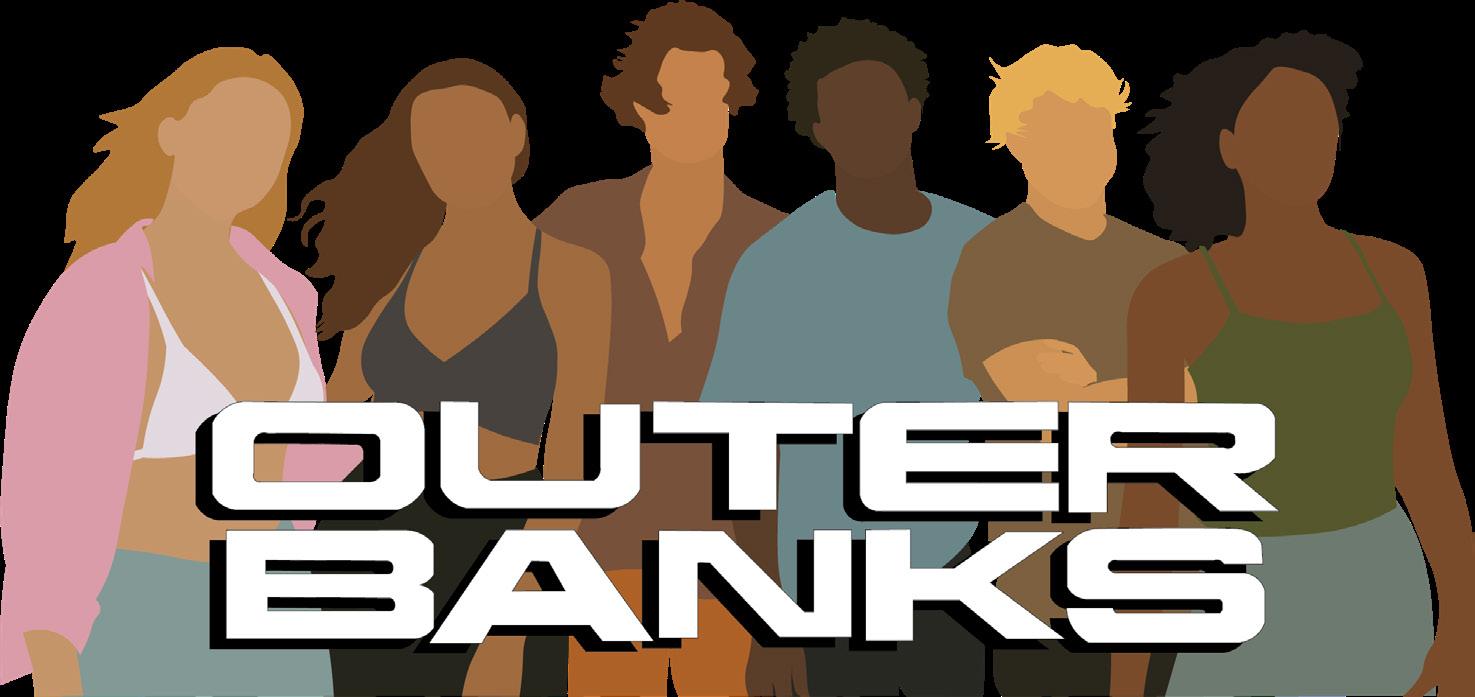
The album of the year came early: A ‘Eusexua’ review
Brendan Kennedy Guest Columnist
“Eusexua is the pinnacle of human experience,” FKA twigs declared on her Instagram on Sept. 12, 2024, announcing her third studio album, “Eusexua.” twigs claims that “Eusexua,” a self-created word, has been a practice of hers for years—an opus of her state of being. Eusexua, according to twigs, is about raving, sweating, kissing and “making love the booming thud of culture.” Upon release of the album on Jan. 24, 2025, twigs revealed how the creation of “Eusexua” revived her, allowing her to find love for making music again while reminding her that she has what it takes to exist in the industry.
“Eusexua” is an art form, something that has been chiseled and perfected over time. Interlaced between club beats, twigs invites listeners to her sensual, supernatural world within a powerful pop statement.
“Eusexua” allows twigs to convey her existence to the listener, unlocking and embracing a new emotion for us to discover.
The first rule of Eusexua is to never stop talking about it, which twigs makes evident on the first song, title track “Eusexua.” The song is a reality in which one loses track of time, containing lyrics discussing extreme euphoria and how with the concept of Eusexua, one is never alone. The song is a mixture of house, techno and a club-beat crescendo, ending with a paramount explosion of hope and sensuality. Here, twigs reveals her view that art expresses unexplored ideas, coming together in a pop-adjacent sound that noticeably excels above her fellow artists, both in terms of lyrical themes and in production.
In the title track alone, twigs’ master creative vision is clear, and her concept and sound beautifully come together to deliver a unique era, seemingly marked by her “apocalypse-in-the-front, club-in-theback,” ancient-Egypt inspired haircut that
is visible in the “Eusexua” music video.
Yet, the title track, which is followed by the y2k-alternative-sounding “Girl Feels Good” and the dance-pop “Perfect Stranger,” only shows a glimpse of the bangers on “Eusexua.” Upon first listen, I was immediately transfixed by the hyper-realistic instrumental and production of “Girl Feels Good,” which urges desiring men to listen to the passion of women. Its soothing and futuristic sound, similar to Madonna’s “Ray of Light,” invites the listener to understand the calming side of twigs’ Eusexua.
Furthermore, “Perfect Stranger,” the second single of the album, discusses embracing the strangeness of an unknown relationship, choosing excitement over potential hardships of the past. The song begins with an in-your-face electronic texture which eventually transforms into a pulsating beat of intimate and seductive production.
Other high points on the album include the third single, “Drums of Death,” which features intense snares and choppy vocal pieces—a feeling of “crashing the system.” On this track, in which she conveys a strong message of sexual liberation and rebellion, twigs urges the listener to “serve cunt.” The booming, rave-like song, “Room of Fools,” delivers an astonishing vocal performance, marked by almost growls and yodels from twigs. She then slows it down on “Sticky,” utilizing gentle piano, soft vocals and crying buzzes. At the end of the song, she startles listeners with a loud burst of electronic beats, reminding viewers that Eusexua is not a stagnant state of being.
“Childlike Things,” which comes a few tracks later, stands out on the album with its glittery, bubblegum, high-energy pop sound. This song includes a surprising yet satisfying feature from North West, daughter of superstars Kanye West and Kim Kardashian, praising God in Japanese. The lyrics discuss having supersonic powers and embracing the lighthearted aspects
of life.
This song is a highlight of the album for me, as twigs fully embraces her creative liberties instead of conforming to the audience’s demanding expectations on her music. twigs knew including West as a feature would be risky due to her family’s problematic history, but as a musical mastermind, she decided to find confidence in her risks and incorporate them into the song’s fulfilling completion.
The other highlight of the album comes on the following track, “Striptease.” Here, twigs fully champions the experimental style by weaving between different club beats, offering sexual empowerment and autonomy: “Opening me feels like a striptease.” This song is emotionally charged as twigs dives into themes of beauty and pain—she is in control, yet simultaneously lost in the movement.
In the music video, twigs is seen dancing in a tunnel, controlling the passing cars with her triumphant presence. The song concludes with an explosion of hyperpop, using the same chorus as earlier over a completely new club-dance beat, turning to an ethereal state of bliss.
twigs concludes the album with “Wanderlust,” where she reaches the endless lust she has been yearning for, going beyond the work as a whole. The “Wanderlust” is where the artist’s other projects were born, discovered, and continue to persist; a space for her to feel protected. Beginning with an acoustic guitar, twigs tells love to find her, even if she is stuck in the immaterial.
In a sense, to feel and appreciate Eusexua, one must enjoy the hardship of life without getting too comfortable. The song eventually transitions to another exquisite club beat, highlighting twig’s self-discovery and fondness for “Eusexua,” ending the album off on a beautiful, peaceful note.
“Eusexua” is groundbreaking for the music scene, introducing different experimental genres and themes that come
together with a flourish. Each track takes its own life form, expanding different tempos, sounds, vocal performance, and remixes. The listener can never predict what will come next; the only logical response to the art is to “sweat it out” on the dancefloor, opening oneself to the endless reactions “Eusexua” emits. “Album’s way too long though,” she says on the last track, teasing the listeners who are desperately hoping for more.
“Eusexua” is an incredible piece of art in a multitude of ways, and twigs’ ability to clearly convey a previously undefined state of being is exceedingly impressive. The possibilities of FKA twigs are endless, and on “Eusexua,” her true sound shines through. Closing the album, she explains, “I’ll be in my head if you need me”—the album may be completed, but her self-discovery is forever grasped. In terms of her music, twigs has found her optimum sound: conversation in pop, with freedom to explore perpetual ways of healing.

MODfest’s ‘Stimmung’ finds beauty in the uncomfortable
Grace Finke Assistant Copy Editor
Centuries of cultural, social and academic understanding of music have created an intricate set of rules dictating the tonality, rhythm and structure of Western classical music. German composer Karlheinz Stockhausen breaks down and pushes the boundaries of these rules in his 1968 piece “Stimmung,” translating to “tuning,” exploring how the physics behind intonation can be a form of art in and of itself.
“Stimmung,” performed by the Magic Names vocal ensemble, was the first musical performance of MODfest 2025. MODfest, which is hosted annually by Vassar, celebrates exploration in the arts with a series of performances, presentations and exhibitions. “Stimmung” embodies the event’s theme of “Discovering Uncertainty” by exploring the fundamentals of harmony and the different ways the human voice can be manipulated through sound and space. Held on Jan. 31 in the Martel Recital Hall, this performance of “Stimmung” was a testament to both the raw ability and the intense passion and curiosity of the performers.
Senior Lecturer in Music and MODfest Co-Director Drew Minter mentioned Stockhausen’s importance in the exploration and innovation of music. Minter said, “Stockhausen is an important composer for mu-
sique concrète, which is sort of building on the blocks of uncertain outcomes.” The style of musique concrète, or “concrete music,” focuses on using electronically manipulated recorded sounds as the fundamental elements of a song, rather than voice or instruments.
“Stimmung” especially emphasizes the coexistence of technology and humanity in music performance, with the composition being scored for six voices and microphones, and a sine-wave drone, which provided intonation, being present throughout the whole piece.
The stage was bare, spare for six chairs placed in an arc with candles softly illuminating the stage. The simplicity of this setup served as a blank canvas for the variety of sonic experiences that were to come. Vocalist and Adjunct Artist in Music Robert Osborne wrote in an introductory note, “We encourage you to allow the piece to wash over you,” suggesting audience members close their eyes to focus solely on the sound.
“Stimmung” explores two dimensions of sound: intonation and space. Stockhausen experiments with pitch, using the physics of sound to analyze and reinterpret chords. The same pitch is warped continuously through different permutations of tone and diction, constantly recontextualizing a simple musical motif.
In addition, microphones and speakers were used to carry each individual vocal line
to a different part of the recital hall, creating a different experience for every audience member. Many of the musical techniques in “Stimmung” experiment with the physical and metaphorical representations of intonation and space, using the space of the room, the space that the performers create with each other, and, in the case of overtone singing, the physical space in the performer’s mouths to create a new interpretation of the phrase “in tune.”
The Magic Names, composed of vocalists Gelsey Bell, Gisburg, Dafna Naphtali, Nick Hallet, Peter Sciscioli and Osborne, utilized their unique voices through melodies, hums and spoken words to create their own soundscape. The group has been performing this piece since its founding in 2007 and has mastered every aspect of “Stimmung” and truly made it their own, being able to focus less on the technicalities of the piece and more on interacting with each other.
This piece begins as an exercise in perfectly tuning a B-flat, using overtones and microtones to create the ideal harmony. However, this motif evolved and drastically shifted as the piece progressed. Throughout the Magic Names’ performance, the singers introduced and incorporated new sonic information such as breaths, whistles, days of the week, each other’s names, readings in German, and erotic poetry—which elicited a stifled giggle from the audience. The group leaned into every possible combination of
sounds, pushing the boundaries on what could be considered music.
Each singer displayed their unique abilities, whether a clear low tone sung by Osborne or percussive vocal fry by Naphtali, and built upon each other’s musical motifs to strike a perfect balance between individuality and unity.
There were many simultaneous moments of cacophony and harmony, consonance and dissonance, and chaos and structure, representing the complex coexistence of each performer’s melody. The performance of “Stimmung” deviated from the typical bel canto (“beautiful singing”) style in Western classical music, emphasizing and embracing natural flaws in the human voice, such as breaks, breathiness and tremors. By disrupting the typical standards of performance, Stockhausen built a new foundation for how sound can portray a message and create an immersive experience.
The Magic Names’ masterful performance of “Stimmung” perfectly encapsulated the explorative and uncertain nature of this year’s MODfest. This avant-garde piece of music exposed the raw beauty and capability of the voice, leaning into everything that would typically be uncomfortable for a performer.
The performance was focused and intricate, yet effortless, and embodied the endless curiosity and discovery in the expansive field of music.
ARTS
Recapping the best songs of 2024
Allen Hale Editor-in-Chief
In case you were not looped in, another year has flown by. I am late to the end-ofyear list-making scramble, but additional time has let me stew on my favorite sounds from the past calendar year. Here are my 10 favorite tracks in no particular order, featuring only one song per artist:
“Keep Her” by Devstacks
Coming out of Boston’s underground hip hop scene, Devstacks has made a name for himself by self-producing the lush, intensely detailed beats he raps over. “Keep Her” is his most impressive yet, combining layers of meticulously placed sounds that whirr past the listener. Skittering hi-hats and a string section particularly stand out within the mix. Despite the excess, Devstacks’ autotuned verses ride effortlessly over his own creation, gelling in a notably natural—if not unsurprising—manner.
“Secret History” by Foxing
I heard this song for the first time in my car during a five-hour-long rug shopping journey, which was ultimately unsuccessful. It began with an eerily soft vocal harmony that skips and crackles like an old, worn-down record. The lead vocals entered, but it continues to feel wholly private, as if I was hearing something I should not be: “Sharpen those dead dreams / Pay them violently / Write them quietly / Secret History.” Then, silence’s void. A sudden scream ripped through the recording, causing me to jolt upright as the drums blasted into infinity. After, another sombre section reprised the earlier refrain, before launching into another louder segment. This time, counterbalancing vocal chord-shredding shouts with clean, dual-singer performances. A tension between opposites was miraculously sustained at this climatic point, leading to the song’s conclusion. I sat silently.
“Wristwatch” by MJ Lenderman
Although I already wrote about “Manning Fireworks,” I need to reiterate my love for “Wristwatch” in particular, the album’s best song. Confessional yet bizarre lyrics, a memorable four note lead-in and steel guitar flourishes combine for a tidy encapsulation of the album’s most poignant qualities.
Upon many relistens, I am increasingly drawn to the effectivity of its rhythmic simplicity, particularly the drum groove on its verses and the roaring guitar solo centered around the lead melody.
“Dewdrop Signal” by Iglooghost
This one evades easy explanation. Iglooghost’s Digital Audio Workstation (DAW) must have looked insane after creating “Dewdrop Signal.” UK bass, the complexity of deconstructed club and grime-inspired MCing all coalesce, somehow. The amount of textures and timbres feels endless. Its dynamic contrasts are sudden but succinctly placed at all times. Just give it a listen.
“Sympathy is a knife featuring ariana grande” by Charli xcx and Ariana Grande
I have to say it: “BRAT” and its related media mania wore on me. From the infamous “kamala IS brat” declaration to LinkedIn posts telling me how the project was an “Early contender for marketing campaign of the year,” the vibrancy of its summertime release hype quickly grew overwrought and forced. Vacuous campaign messaging, marketing stunts and artistic pursuits were enmeshed in a questionable album-industrial complex. “Apple,” a song I was lower on, somehow became the one to trend. By the time the remixes rolled out, I just rolled my eyes. How long would it go on for? Despite this, the original tracklist of “BRAT” contained most of the year’s best pop music; it owed its success to a compelling musical foundation, both for myself and millions of others. I hesitated, but finally gave the “Sympathy is a knife” remix a listen. This version transforms the unorthodox, echoey electronics and choppy rhythms of the inventive original into an anthemic, attention-grabbing banger. The pitch-bending synth-bass roars like a close-up buzzsaw, working in tandem with the pounding kick drum to produce one of my favorite instrumental moments of 2024. As an unfamiliar listener, I was thoroughly pleased with Grande’s contribution here. Surmounting earlier frustrations, the original “BRAT” then grabbed my attention again. Al Pacino’s line from “The Godfather Part III” neatly sums up my thoughts: “Just when I thought I was out, they pull me back in.” Unlike that sequel, this remix feels neces-
sary, even though I am relieved that the incessant meming has died down.
“They Love Ayoolii” by AyooLii and FearDorian
This might be the most fun song of the year. Across “A Dog’s Chance,” Polo Perks <3 <3 <3 collaborates with AyooLii and FearDorian to flip impeccably left-field samples into addictive songs that frequently clock in at less than two minutes. Carissa’s Wierd, teen suicide, M.I.A. and Israel Kamakawiwo‘ole are a few of their ludicrously amusing but successful choices. However, the concise hilarity and played-up performance of “They Love Ayoolii” is too joyful to miss, especially with its danceable backing. “If I catch a opp, I’ll take him out his lunch money” is a line for the ages.
“PHENOBARBITAL_ftmongleaux” by Tailtiu (feat. Mongleaux)
The sneering raps of Mongleaux cycle through a few of my favorite flows of the year here. Somehow, the word “phenobarbital” is transformed into an earworm refrain. I have trouble articulating the electronic craziness of Tailtiu’s production prowess; she creates noises comparable to sci-fi laser guns and robotic bird whistles. The trebly bass is exactly what I want to hear on a night out. Nothing quite sounds like this.
“TERRIBLE EXCELLENCE” by Bladee (feat. Yung Lean)
Despite being a years-long fan, Bladee’s output since I started following his career has been continually underwhelming for me. Until “Cold Visions” was released last April, it felt like he would never drop something comparable to his pre-2019 releases. The aforementioned album’s consistency across 30 songs makes picking one difficult, but I landed on “TERRIBLE EXCELLENCE.” Bladee opens with a verse only he could pull off, childishly referencing fictional killers like Chucky while recalling an experience of a paranoid, sleep-deprived delirium. Yung Lean effortlessly exchanges verses with his long-time collaborator, all supported by a minimal, warbly beat that underscores the sinister topics recounted earlier.
“Like That” by Future and Metro Boomin (with Kendrick Lamar)
As with “BRAT,” the originally entertain-
ing Kendrick-Drake feud ran its course for me sometime during the summer. “Meet the Grahams” was shocking and darkly pungent, “Not Like Us” was a unanimous song of the summer and “euphoria” was personally on repeat in my headphones. But, even as the easy layup of Drake-bashing grew tired, I kept returning to “Like That,” the original response that snowballed into the beef’s main multi-song volley. Future’s chorus is another addition to his already-prolific canon; Metro’s production won me over with its alarm bell-sounding three-note melody, despite initial suspicion. Kendrick, however, was the star of the show, as he often is on others’ songs: “goosebumps,” “Really Doe” and “Yeah Right” immediately come to mind. Catchy but technical, quotable yet multifaceted, all components of Kendrick at the top of his game in just under a minute. Much-needed levity is provided by quips like “If he walk around with that stick, it ain’t André 3K.” What is not to like?
“Crush” by fakemink (prod. ok)
Shifting away from the airy atmosphere and late-night inwardness of his 2023 record “London’s Savior,” fakemink demonstrates his chops and range on “Crush.” The nonchalant, almost laidback delivery of the former album is replaced with a bouncy, glitzy instrumental featuring some of his most upbeat lines. A distorted, boosted bass and chopped-up, repetitive vocal loop contribute to the song’s frenetic energy and mesmerizing, psychedelic effect. His boastful lyrics run through a well-deserved victory lap, nicely pairing with the aforementioned in-your-face sonic showcase: “This real life, man, I know what it feels like.” Amen.
Honorable mentions:
“Dog in the Yard” by Ex Pilots, “Sticky” by Tyler, the Creator (feat. GloRilla, Sexyy Red & Lil Wayne), “We’re All Losing It” by Everyone Asked About You, “DENIAL IS A RIVER” by Doechii, “Sticky” by Still House Plants, “solo un momento” by sunlid, “No Machine” by Adrianne Lenker, “I Return as Chained and Bound to You” by Thou and “paris syndrome” by moribet.
Although I got off to a slow start, 2024 might be my favorite musical year of the decade—so far. My New Year’s resolution? Keep the momentum going for 11 months.

The Retreat welcomes historic Head Chef
uncle actually gave me a call and said, ‘Do you wanna learn the family business?’ He said, ‘Come to work tomorrow morning, we’ll start you in the deli.’”
This was Ilardi’s first step towards a lifelong career in the culinary world. She explained to me how critical her family was in inspiring the perseverance she needed to succeed as a woman in such a cutthroat industry. “I learned my work ethic strictly from my family. I had six uncles, I really learned the grit of it all,” she explained, remembering her time as a young woman getting a crash course in working with food. Her memories extended well beyond the job too. “I would always be at my grandma’s house, she would teach me how to cook chicken cutlets, chicken parm, [we’re] a big Italian family, holidays were always a big deal, so I always made sure to be with her, next to her.” With a huge smile on her face, Ilardi told me how cooking is still in her family’s blood. Her husband, Giovanni, owns the Italian restaurant Spettro in Poughkeepsie–just a five minute walk from campus–, and she likened running The Retreat to running a restaurant. With every special memory that Ilardi shared with me, I could see clearly how much she cares about cooking and how, for her, it is so much more than just work. She described falling in love with the way food can create memories, conversation and connection with so much passion I could feel it radiating off her.
After her period of uncertainty postgrad, Ilardi made the move to Poughkeepsie to attend the Culinary Institute of America (CIA) in 2010. Here, she worked at Shadows on the Hudson to put herself through school. Shadows is also where she met her husband 13 years ago. After she graduated, the pair began to establish a life for themselves in Poughkeepsie. He told her “You went to school to cook, you need to find a job in a kitchen.” That is exactly what she did. She started as a line cook, then a bartender, always finding people who needed help by word of mouth. After six months of travelling around the Hudson Valley working wherever she could, Ilardi became the sous chef at Schatzi’s Pub and Bier Garden in New Paltz. She and her husband eventually married, and later had a son. At this point she had to reckon with
the reality of loving an industry that generally affords poor work-life balance and the reality of caring for a newborn baby. “I had my son, and I was like I don’t think I can go back to the restaurant,” she told me. “I wanted to be a mom but I also knew I was gonna miss doing things with food like cooking and being around new people.”
Luckily, the stars aligned and five years ago, when her son was six months old, Ilardi was hired as an Associate Chef at Vassar College. A year ago, she took a test to be certified as a Head Chef so she could fill in when needed. Then, when Brad Goulden retired, she took another test, applied for the job and officially became The Retreat’s first woman to hold the title of Head Chef. Her eyes began to mist while describing the fulfillment working at The Retreat gives her, and it would have been obvious to anyone that nobody could be better for the job.
Ilardi has had to work hard to get where she is as a woman in a male-dominated field, a virtue learned from her family that she hopes to pass on to her own children. She told me how her son, now five, always expresses how proud he is of her and how much he loves seeing her in her new Head Chef jacket. “I tell him, ‘never stop fighting for what you really want, no matter how much people discourage you.’ Especially since this is a man-driven industry, now you’re seeing a lot of women putting their stamp on it. It’s not a man’s world anymore. I’m just very happy.” She explained to me how being a woman in the kitchen is not about competition, but an effort to prove yourself in a way that I cannot imagine men are thinking about. “There’s never a time where I stop, it’s like, I can do that too. I can lift that, I can cook that, I can do the same thing as you.” She shared with me stories of other women she has known in her life, whether her grandmother, other female chefs at Vassar or celebrity chefs like Giada De Laurentiis who have given her the inspiration to keep pushing in an industry that was not designed for women, relegating them to domestic labor while insisting they lack the fortitude to make it in as intense of a workplace as a professional kitchen.
“When I went to [The Culinary Institute of America] I had all these male chefs [teaching me]. I didn’t want them to think, ‘oh she’s a girl, if she cuts her finger is she
gonna cry?’ I didn’t want that. You saw a lot of people started dropping out after extern.” Extern, or externship, is a required class at the CIA where students work fulltime for several months in a professional culinary establishment. It is known for being one of the most rigorous aspects of culinary training. Ilardi went on “You have to keep pushing yourself. When I was at [The Culinary Institute of America] there were prerequisites. Now people just can go and they think it’s like the Food Network and it’s not. It’s more than that, at least for me. I always like when food makes conversation.” A throughline in our conversation was her passionate belief that food is a powerful means of connection, an idea I still remember when I sit down now for a meal with my friends.
“I like to be here first, I like to set an example, just so they know that we’re all in this together.” That sentiment encompassed all of what Ilardi shared with me about what it is like for her to run The Retreat. She explained how she likes to come in early and complete even the seemingly smallest tasks, like getting water boiling or preparing sanitation equipment for her team. Her collaborative leadership style seemed to me like exactly what someone would need to get through the hectic mornings she described as everyone rushes to get ready for students to show up for lunch. For Ilardi, being the Head Chef is not about being above everyone else or having total control. Quite the opposite. For her, The Retreat is a team working together. Especially tricky for her is taking over for Goulden after such a long tenure, making sure not to step on toes and to ask questions about how he would do things, while also letting her own creativity and ideas dictate some decisions. This balance is hard to strike, but it was obvious during our conversation that the care she has for her work is genuine, and she endeavors to be the best leader possible. Ilardi is incredibly energized and excited about this new era at The Retreat. “I just want everyone to know that The Retreat now is going to be elevated; I have a lot of input with the menu. We have so many ideas to give you guys surveys or do themes, like Oktoberfest…I’m just always moving, and then I go home and I’m a mom to two boys, and I’m still cooking.”
Excitement for her work filled up the en-
tire room as we spoke, and I cannot wait to see her ideas come to life.
When I asked about her favorite things to cook at Vassar, I was devastated to hear that she loves to make clam chowder at The Retreat. I desperately need someone without a severe clam allergy to report back on how it is; I am sure it is excellent. Beyond that, Ilardi spoke about how some of her most special memories working here came during her time serving food at Oasis every Wednesday before taking over at the Retreat. She told me about the special connections she made with students she cooked for personally to help them navigate severe allergies at college. More broadly, she described the special emotional connection to working on a college campus that being a mother gives her. “You guys aren’t home with your family, we have to cook for you and take you guys in as one of our own, I always think about if they were my children, I want you to have good meals and be reminded of home.”
Of course, I had to ask a final very serious question: What is Chef Ilardi’s favorite thing to eat? “Lasagna, it reminds me of my grandma, it’s gotta be crispy on the edge. I love ice cream, any kind of ice cream is my favorite. I love chimichangas, [Margaritas] on Route 9 by Kohls, they make the best chimichanga, everything on that menu is fabulous”
It would be hard to beat a good Mexican restaurant recommendation, but there was one more piece of advice Ilardi wanted to share with all of us. “If what you went to school for initially doesn’t make you happy or doesn’t work it doesn’t mean things are over. Age is nothing but a number, just because you got a degree in mathematics and then you go into the kitchen as a cook or whatever, it doesn’t matter. It’s never too late to start something else.” So, next time you are panicking, desperately trying to figure out if you should apply to law school or learn welding or whatever, consider taking a deep breath and walking over to The Retreat. Take a bite of some delicious food. Let the flavor wash over you and remind you that right now, everything is ok. Remember that even if you do not know them or you cannot see them, there are people all around that care about you and believe in you. Every Vassar student is lucky to count Chef Ilardi as one of those people.

BREAKING NEWS
From the desk of Oliver Stewart, Humor Editor
Stakes are high: President Bradley to offer $5 if you catch her walking around on her phone, $10 on her iPad, $1000 on her XBox 1 Series X
PB to be replaced with big guinea pig
Shock and horror swept the Vassar community this morning as news broke that President Bradley is stepping down from her position and will be replaced by a giant guinea pig.
“Presidenting is fun, yeah, but it’s getting a bit boring,” said PB when asked to comment. “I want to travel the world! I want to try new things! It’s time for me to move on. And while I’m sad to be leaving all of you, I’m happy to know that Vassar is in the capable paws of Gertrude the guinea pig.”
Students and faculty are not quite as enthusiastic about the change. “I mean, it’s ridiculous,” said Zach Flisakowski ’27. “A hamster president would be one thing, but a guinea pig is a bit much. Also, she’s huge! How is she even going to fit in PB’s house?”
She’s not. The president’s house will be torn down and replaced with a giant guinea pig enclosure, complete with a massive water bottle that hangs upside down, plenty of bedding for Gertrude to tunnel through and a massive wheel for her to run on while in Zoom meetings. “The clear glass of the guinea pig enclosure is purposeful,” said a representative for Gertrude. “Gertrude is going to be transparent about all her policies and protocols, and we want those ideals to be represented in her home.” Here’s hoping the litter box part of the enclosure has some curtains around it.
Some students are optimistic about the new administration, maybe even a

little excited. “I CANNOT WAIT for Gertrude to start working here!” said Maria Milovanovic ’27. “I’ve always thought PB just wasn’t furry enough, and she sorely lacked a friendly nose twitch. I wonder if Gertrude will let me ride her like a horse.” We’ve heard reports that on Founder’s Day, Gertrude will be saddled up and let a few lucky students ride her around the Nircle.
Other students wonder if this new hire will lead to a different, animal-friendly
Vassar. “I really want to bring my pet cow here,” said Olivia Blank ’27. “Her name is Buttercup, and she could totally live on the Nircle. She’s so friendly. Do you think Gertrude would be okay with that?” The president’s office issued a statement in response. We’re pretty sure it says that pet policies will not change, but it’s hard to make out exactly what the statement says because somebody chewed on it.
No matter how you feel about Gertrude’s appointment, it cannot be denied
that this is a big moment for Vassar. “I’m incredibly excited to be making history as the first guinea pig president of Vassar College,” said Gertrude when reached for comment. “I previously worked at Northeastern University, but I’m looking forward to experiencing the liberal arts right here in the beautiful Hudson Valley. Come by and chat anytime! My wheel is always running.”
Here’s hoping Gertrude can use her rodent powers to get the mice out of Noyes.
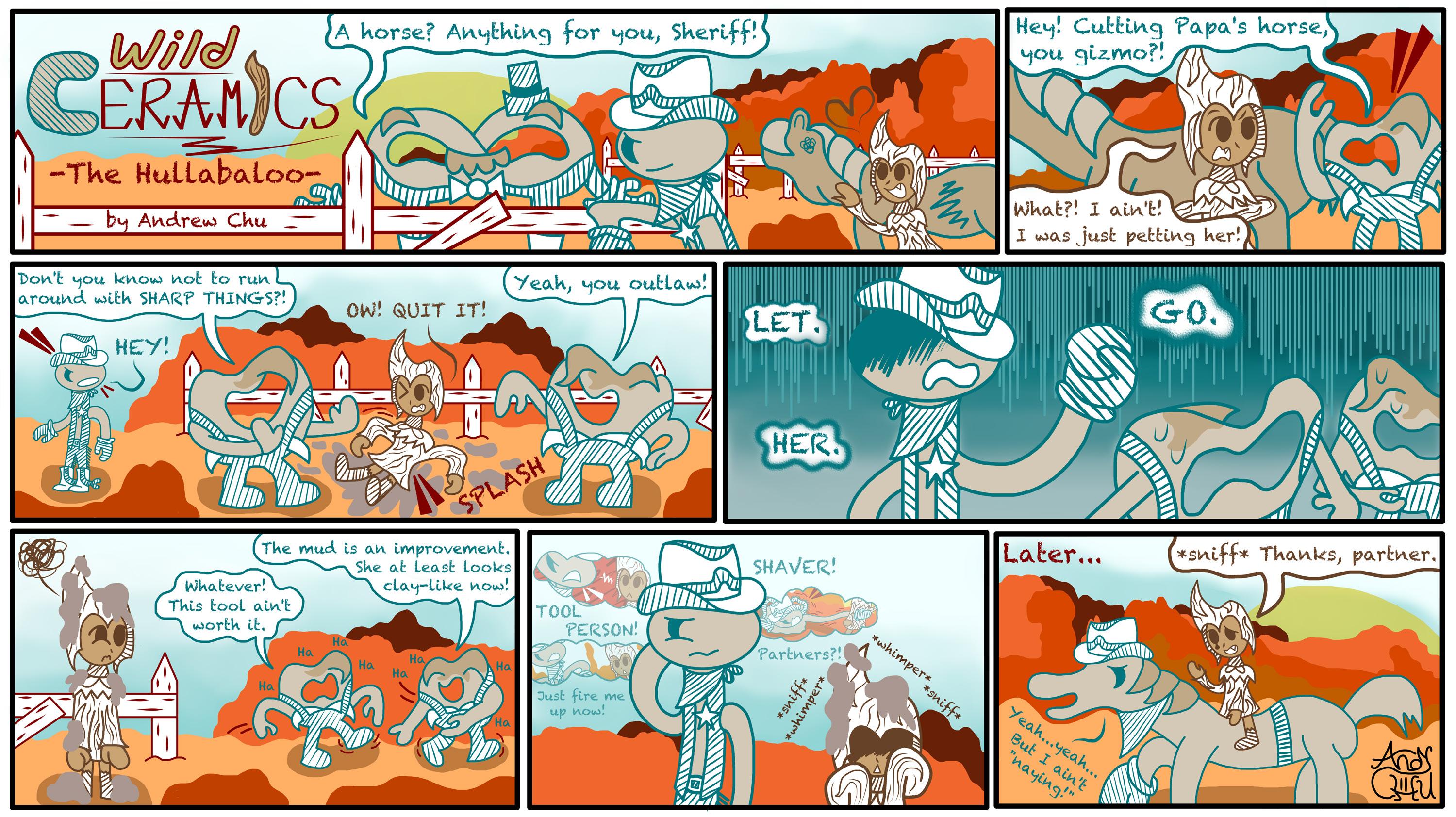

ARIES March 21 | April 19

TAURUS April 20 | May 20
HAIKUSCOPES
Emma daRosa Lowercase Intentional Miscellany News
You are so angry
Go punch a wall so hard now Only if it’s soft

LIBRA Sept. 23 | Oct. 22
BE SO CAREFUL, PLEASE DON’T ICE SKATE ON SUNSET LAKE It is a liquid
The Deece ice cream calls Put your hand inside of it Wait! It might be cold

GEMINI May 21 | June 20
Cigarettes not cool But they can look so sexy One of god’s small tests

CANCER June 21 | July 22
This week? Go to woods
Eat a mushroom that you find It might be poison

SCORPIO Oct. 23 | Nov. 21
Slide down stair handrails
You could use some fun. Less stress Don’t hurt your hiney

SAGITTARIUS Nov. 22 | Dec. 21
Break windshield wiper
Any car, does not matter
Breaking stuff feels mmm

CAPRICORN Dec. 22 | Jan. 19

LEO July 23 | Aug. 22
Whiskey, tequila Rum, gin, brandy, vodka too Drink some. Yummy. Woo!

AQUARIUS Jan. 20 | Feb. 18

VIRGO Aug. 23 | Sept. 22
Try rutabaga Yummy root vege uh tuh bull (vegetable) Or yucky. Your call

PISCES Feb. 19 | March 20
You hate poetry
Just give it one more chance, please Maybe a…haiku?
No poo poo for you So constipated. Karma Maybe eat a prune
You will have good days
Enjoy them while they last pal Life is cyclical
How I learned to stop worrying and love the blow-off class
Nandini Likki I’m Just Chilling
Vassar is no stranger to overachievers; in fact, you might be one yourself. Have you spent nights cradled in the fetal position, whisper-reciting French conjunction charts? Have you ever written and then rewritten the same essay 15 times, just because you thought your thesis wasn’t strong enough? It’s due to these healthy habits that we’ve made it to the second semester of senior year. But sometimes, it can actually be good to (gasp) relax a little bit. Just a little bit. Maybe for like five minutes. Then I’ll get back to my reading.
One way to relax academically and take a step back from more rigorous coursework is to take what’s known as a blow-off class. Blow-off classes are ones where you know it doesn’t take much to pass, and even if you
don’t pass, it won’t matter much anyway. Being that this semester is my final one, I have decided to treat myself to a blow-off class: Introduction to Psychology. I’ve always been interested in learning more about the human mind and how it functions, not to mention the thrill of diagnosing my friends with various afflictions based on uncorrelated symptoms. I was initially worried about whether I would get into such a competitive class, especially because I’m not a psych major, but my psych major housemate told me to go for it. It would be my first 10:30 a.m. class in almost two years. Looking at my Google Calendar made me feel young again, like I was a sprightly freshman, still able to do silly things like wear lipstick or put on deodorant before going to a class so early.
When I first walked into Intro to Psych on that chilly Wednesday morning, I could feel the air in the atmosphere change. The hunch
in my posture loosened from its stiff grasp on my spine. My skin felt clear and clean. I felt like anything was possible, that maybe things weren’t doomed and I could forge a path onward to happiness. I sat down amongst a cohort of freshmen and realized I was virtually unrecognizable. I could be whoever I wanted to be! As my professor greeted the class, I pored through the syllabus. The structure and organization immediately set my mind at ease. I knew that this class would have no surprise readings or last-minute coursework additions. The weariness and exhaustion in my professor’s eyes indicated that he had taught this exact course upwards of a million times, meaning that the syllabus had been standardized. Even though the syllabus was lengthy, it was precise and perfect. I knew exactly what was expected of me and how to achieve it. I kissed its pristine pages. This was going to be a beautiful experience.
I can only attest to that experience across these first few weeks of classes. I have not completed a single reading or lecture for Intro to Psychology, yet my mind has opened up in ways I never thought possible. Whenever my professor talks about neurons or whatever the brain does, I simply stare out the window into that beautiful Kenyon parking lot. And my productivity and efficiency in my other classes have shot through the roof! I am now writing essays and shooting films at the speed of light. My professors have never seen such competence.
If you’re a stressed-out, frustrated student thinking, “How will I ever get out of this labyrinth?” Don’t fear, simply scroll down the course catalogue, find some random 100-level course to declare as your blow-off class and watch the stress simply melt away. Oh, Add Period is over? Huh. I guess you’re fucked.
Moodle discussion post forum devolves into anarchy
Nicholas Tillinghast
Moodle Troll
There’s been just a shred over two weeks of class at this point in the semester, but one thing is clear: The Moodle discussion tab, typically a space for level-headed cold takes on the week’s materials, has become a place of raucous in debate in Profesor William Zoboomafoo’s 100-level Film class, “Animals on the Screen: From Aardvarks to Animals that start with the Letter Z.” It all began last Tuesday when students were prompted to give their thoughts on the week’s screening, the 2007 Pixar film, “Ratatouille.”
Problems quickly arose when student James Garfield ’25 asserted that the Patton Oswalt vehicle shared a strong intertextual connection to the 1985 rodent-centric book, “If You Give a Mouse a Cookie.” Student Marma Duke ’25 quickly replied:
“You’re thesis is laughable. The central characterization of that infuriating mouse is that his appetite is never satiated. He is the worst kind of person. Remi, on the other hand, is a very talented, grateful rat who earns the affection of Linguini in a dangerous human world. A superior rodent comp would be ‘The Little Mouse, the Red Ripe Strawberry and the Big Hungry Bear,’” which features a mouse that feels the effects of preydom as deeply as Remi does.
In a 1,654-word screed, Garfield replied just ten minutes later. We share just an excerpt here: “...Listen here, buddy, and listen clear. Remi’s allegiance to the godlike figure, Chef Guesteau, is the core of that film. Remi knows that he can manipulate humanity (steal) just as the unassuming mouse of ‘Cookie.’ Part of what is so compelling about that narrative is that, as humans, we have all been that mouse. Taking advantage of people can be addictive, even if it’s not morally right. How can Remi be considered persecuted when he can always just steal????”
To which Duke replied: “No, you listen to me, bucko. Remi lives in fear. He is the mouse of ‘The Little Mouse, the Red Ripe Strawberry, and the Big Hungry Bear.’ The humans of ‘Ratatouille’ are literally the big hungry bear. WE ARE THE BIG HUNGRY BEAR.” Garfield replied simply, “No. You, sir, are a rat.”
This would not be the end of the two’s spat as the following week’s screening of “Babe: Pig in the City” again inflamed the discussion tab. Duke praised the film for its unique use of “monkeys” in the film, stating that the reserved, dignified characters Zootie

and Bob seemed like uncommon monkey portraits, though quite refreshing. Duke quickly replied, typing: “Bro, most of the monkeys you refer to in the film are actually apes, Great Apes, of the taxonomic family Hominidae. Next time think before you type.”
Followed by the post, “I am right,” followed by, “Bro is left speechless,” followed by: “You are a fool! A fool!” Two minutes later, Garfield finally clapped back: “YOUR CORRECTION IS PURELY ON THE BASIS OF SEMANTICS. ANY HAPLORHINE PRIMATE CAN BE COLLOQUIALLY UNDERSTOOD AS BEING A MONKEY, DIPSHIT”
Following that message with a short one: “UPPER UPDEECE. 9 P.M.”
Later that night, Professor Zoboomafoo
stepped in, and replied to the thread that had grown to 100 messages in less than an hour. “Guys, this is really not in the spirit of the class. If by giving a time and location in all caps, you are insinuating some sort of act of intimidation or violence, Mr. Duke, I will have no choice but to be very disappointed.” Garfield replied to Professor Zoboomafoo, stating, “Bro, you’re readings suck and they’re too long,” to which Zoboomafoo replied, “10:00 P.M. LIB LAWN.”
That night at 9:00 p.m. in the upper updeece, any hope of Duke and Garfield peacefully reconciling their differences was quickly dashed when Duke shocked Garfield with a hand buzzer, smashed a painting over Garfield’s head where the head on the painting was and then pushed him to an
array of floor marbles. After recovering his balance, Garfield proceeded to stuff Duke into the back of a grand piano and then play the keys, sending the little piano hammers into his delicate face, swiftly ending the violent dispute as a large fleshy bump quickly swelled out of Duke’s forehead. Garfield’s meeting with Professor Zoboomafoo later that night was not as successful. Zoboomafoo, in front of a sold-out crowd, chokeslammed Garfield off of a ladder and into three tables stacked on top of each other.
Zoboomafoo had but one message after the fight, “I’m just doing what any good professor does: Teach my students a lesson.” You can lead a horse to Moodle, but you can’t make it think.
OPINIONS
Democracy and pluralism cannot thrive without tolerance
Soren Fischer Opinions Editor
Supporting pluralism does not just mean acknowledging various interests and lifestyles, but rather engaging in dialogue with those who hold them. The critical baseline value is that of mutual respect, understanding and most importantly, tolerance. In the context of modern politics, however, we have seen democratic backsliding trends, where the space for open dialogue is shrinking. As a result, extremism becomes inevitable, and intolerance becomes a dominant strain in political discourse. We are witnessing a shift in how tolerance and pluralism are increasingly suppressed, and the rising popularity of authoritarianism, per the Pew Research Center. Does tolerance, however, extend to the intolerant? If tolerant people tolerate the intolerant, but the intolerant refuse to tolerate the tolerant, a paradox arises. Philosopher Karl Popper addressed this problem in “The Open Society and Its Enemies,” where he argued that in order to maintain a tolerant society, tolerance must have limits. Societal demonstrations that tolerate the intolerant risk enabling the rise and eventual domination of intolerance, which ultimately undermines the very principle of tolerance.
So, what does that mean in the broader context of plurality and democracy? Most Vassar students, I can confidently say, believe in democratic ideals, such as freedom of speech. Pluralism—when various groups, beliefs and the like coexist—is a fundamental condition and the lifeblood of a genuine democracy.
Engaging with pluralistic dialogue in an echo chamber like Vassar, where the student body tends to be quite homogeneous in terms of values and social perspectives, can be difficult. That is why supporting pluralism does not just mean acknowledging another experience, but rather entertaining dialogue with that system of belief.
Tolerance can sometimes feel like a passive state, where different ideas are merely acknowledged but not genuinely understood or debated. I believe that debate, when done respectfully, leads to self-reflection and better ideas, helping us move beyond surface-level tolerance to deeper understanding. Super-
ficially, tolerance can be about agreeing to disagree, a form of coexistence that maintains the structures of identity politics and exacerbates polarization. When people simply agree to disagree without any further discussion or challenge to their beliefs, they avoid confronting the assumptions that drive their views, which simply leaves the reasoning behind ideological divides unanswered and exacerbates polarization. Pluralism in a genuine form is about demonstrating an active willingness to engage, question and even challenge other ideas.
At Vassar, and many institutions of higher education, the tension between free speech, the right to assemble and the value of tolerance has been especially pronounced for the last 16 months, as student-led protests have dominated both campus culture and media coverage. We celebrate diversity of thought, but what happens when those thoughts challenge our understanding of what is considered an “acceptable” expression of thought? In the classroom, are students willing to read source material that articulates a position they are opposed to, or do they immediately shut it down? These tensions exist in various settings, and when our core values are challenged, how we respond to conflicting viewpoints is crucial to maintaining the integrity of those values.
On the About page of Vassar’s website, the College argues that the exchange of ideas is a core value and foundational to learning, stating: “Today’s students, who meet each other as equals, are encouraged to develop diverse perspectives through engaging in lively dialogues with faculty and fellow students.” Vassar’s idealization of an environment where various viewpoints can be heard proves contrary to the administrative desire to censor the community from engaging with what may be unfairly construed as unwanted rhetoric.
Tolerance can be construed by understanding that some forms of belief are more harmful than others. Yes, this does appear contradictory to the democratic ideals of allowing opinions to flourish unfiltered. It is important, however, to note how tolerating a diverse set of ideals is different from tolerating ideas that seek to undermine the values of toler-
ance itself, again highlighting the paradox of tolerance.
This is not so much a critique of how institutions outline dialogue, especially since Vassar clearly outlines its approach in its Statement on Academic Responsibility and Respect for Persons:
“Vassar College values freedom of expression and supports deep engagement in and equitable access to teaching, learning, scholarly research, and artistic endeavor. The College is committed to the pursuit of knowledge, freedom of inquiry, and informed, robust, and inclusive debate. Vassar’s faculty and students may engage with an array of disciplines and issues and are free to explore contested ideas and political positions. Our community welcomes forms of dissent and protest that acknowledge and encourage the expression of different perspectives.”
Instead, what I am concerned with is how students face the challenges of engaging in robust dialogue that encourages pluralism. Simultaneously, they must recognize when space may or may not be given to ideas that actively silence and threaten the sanctity of others’ ability to tolerate in the first place. How can we establish an environment where we can genuinely question what experiences shaped an individuals’ beliefs? When considering that, while also reflecting on one’s own
experience, it gives space to challenge those contradictory beliefs and transform them. Ultimately, engaging in robust dialogue with those whose fundamental beliefs challenge your own civil or human rights is beyond difficult. Of course, in a situation when those ideals are principally intolerant, recognizing whether the paradox is applicable is a necessary step in acknowledging how ideas must be unequivocally tested, refined and discarded from an authentic democracy.
Open-mindedness is a vital feature of a pluralistic society. To maintain a commitment to democracy and tolerance, people must strive to engage with their ideological opposites while actively ensuring that such engagement remains possible.
As we move forward into a period of time where authoritarian tendencies and democratic backsliding are increasingly visible, and with legal institutions and protections of communities being put on the chopping block, it is important to recognize that pluralism emerges most powerfully when we confront those with whom we disagree most profoundly. To be transformative within the framework of democracy, having those difficult conversations will only strengthen the foundations of pluralism that allow us to build tolerance in an otherwise intolerant society.

Are we cooked? Gen Z experiences delayed milestones
Maryam Bacchus Senior Editor
WhenI told my high school English teacher that I would be attending Vassar College in the fall of 2021, she responded with an anecdote about her friends who are alumni and college sweethearts. Selfishly, I hoped that I, too, would find college love so that One Direction’s “18” could be my wedding song. As an avid pre-college planner, I figured the milestones I should hit within the first ten years of legal adulthood would include a long-term relationship, financial independence and a graduate degree. Now approaching graduation and the halfway point of this timeline, I could not feel more different.
I turned 17 during the COVID-19 pandemic and now, as a 21-year-old, I often find myself not resonating with my age and instead, feeling stuck somewhere between 17 and 19. Compared to family members, friends or many of the characters in the media I grew up with, I feel I have achieved far less. A few years ago, I thought I was alone in this opinion. Through commiseration and posts on popular media, I have since realized, however, that many individuals around me feel
similarly and I have been curious as to why.
An analysis conducted by Pew Research Center showed that today’s young adults are reaching life milestones later than previous generations. Specifically, the analysis compared a sample of U.S.-based young adults aged 21 and 25 in 2021 to those of the same age in 1980 across five specified milestones. These included: Having a full-time job, financial independence, living independently, getting married and having a child. Both age demographics were behind their predecessors in all categories, with 25-year-olds beginning to close the gap in the economic categories.
According to the analysis, college enrollment is a potential reason for the lower reported rates of having a first full-time job by 21. This makes sense for myself and many of the people I encounter on a daily basis, as we all attend a four-year college. As someone currently on the job market, it is also proving difficult to find first-time opportunities. In December 2024, S&P Global reported that entry-level positions that once provided a platform for college students’ foray into the workforce have largely disappeared. Amidst rising wages, interest rates and the rise of artificial intelligence, companies are
less motivated to expand and recruit. The lack of economic opportunity also forces recent graduates to return home after graduating in order to save money during the job hunt. Others, like myself, have also put off graduate school to return home and work whatever job they can find in order to save up for the eventual cost of living when they return to their studies.
Across both previously mentioned samples, today’s young adults are also less likely to form a family; they are less likely to both be married and have a child by 25. There are many factors that might contribute to this change, notably economic struggles. Without sufficient income, many young adults are focused on getting by rather than commitment to establishing a household with a partner. Additionally, Pew reported that today’s parents prioritize financial stability and job satisfaction for their adult children, as compared to relationship-based achievements.
Beyond this, many who are interested in dating for the long term report dissatisfaction in finding people to date. In recent years, dating has become harder as people are split between real-life, traditional introductions and transitioning to online dating.
Further, the highly politicized climate in places like the U.S. have added view-based dealbreakers for many Americans.
The new administration in the U.S. is wreaking havoc on the cost of living as well as reproductive rights and significant policies contributing to socioeconomic wellbeing. As a result, I cannot imagine today’s young adults will take strides towards the traditional timeline for life milestones. In chatting with my peers, many of us are less than optimistic about the four years that are to come, and are hesitant to make long-term commitments. In speaking with my graduating peers, some have expressed worry about receiving funding for graduate studies, and others are concerned about the feasibility of finding a job in the field they sought a degree in. Across the board, there is anxiety over affording the cost of living and finding a partner to share the burden with. Further, many are not inclined to have kids due to financial strains and worry over raising another generation in the political and economic landscape we have been growing up in. I am curious to see how society adapts around the new milestones caused by the circumstance-based decisions of today’s young adults.
Dončić traded to Lakers in stunning move
Henry Frnace Sports Editor
On Saturday, Feb. 1, the Los Angeles Lakers traded Anthony Davis, among other pieces, to the Dallas Mavericks in exchange for 25-year-old superstar guard Luka Dončić, as first reported by ESPN. Los Angeles acquired Dončić, Maxi Kleber and Markieff Morris in a three-team trade with the Dallas Mavericks. Dallas landed Anthony Davis, Max Christie and the Lakers’ 2029 first-round pick, while the Utah Jazz acquired Jalen Hood-Schifino and 2025 second-round picks from the Mavericks and L.A. Clippers. The trade news broke about an hour after the Lakers beat the New York Knicks at Madison Square Garden in New York City. Davis was not at the game, though, as he was back in Los Angeles tending to an abdominal injury. Similarly, Dončić has not played a game for the Mavericks since Christmas Day with a strained left calf. Despite the injury, Dončić remains one of the most incredible players in modern-day professional basketball; among players who have played at least 400 games, Dončić’s 28.6-point average is third in NBA history, behind only Michael Jordan and Wilt Chamberlain—both at 30.1. Last season, Dončić was third in MVP voting after averaging 33.9 points, 9.8 assists and 9.2 rebounds per game. Anthony Davis will conclude a six-year run with the Lakers that included an NBA championship in 2020. The 10-time All-Star averaged 24.8 points, 11 rebounds and 3.2 assists while with Los Angeles and will now be paired with eighttime All-Star Kyrie Irving in Dallas. Dončić will team up with basketball legend LeBron
James and reunite with former teammate and current Lakers Head Coach JJ Redick. It is to be expected that a player like Dončić—the type of figure that a franchise builds their character around—would be “untouchable.” But, on a Saturday night in the middle of the NBA season, Luka Dončić was traded away in one of the most shocking deals in NBA history. When the deal was first reported, only one NBA game was in play: the Phoenix Suns vs. Portland Trail Blazers game. The Associated Press (AP) reported that fans first told Suns guard Devin Booker about the trade while he was on the bench, “They said Luka. I said, ‘Luka Garza?’” Booker said, referring to the Minnesota Timberwolves center and somewhat irrelevant, tradeable player. But Booker was not making a joke; he sincerely thought, as many NBA players, coaches and fans must have, that there was no world where the Mavericks would trade away Luka Dončić. Booker was not the only NBA player shocked by the news. Former Mavericks guard Jalen Brunson reacted via X, “April fools right?” while former NFL quarterback Robert Griffin III wrote, also via X, “If they will trade Luka Doncic in his prime, they will trade anybody.” The statement encapsulates the story well; this move is completely unprecedented.
Dallas Mavericks General Manager Nico Harrison attempted to elucidate the move on grounds of defensive bolstering and contract strategy. Harrison told ESPN, “I believe that defense wins championships… I believe that getting an All-Defensive center and an All-NBA player with a defensive mindset gives us a better chance. We’re built to win now and in the future.” Harrison is
adamant that Dončić simply does not supply the defensive prowess necessary to lift the Mavericks to an NBA championship, but it is hard to argue that sending away the star guard and his 30+ points-per-game game will be supplemented by the support from Davis, an injury-prone 31-year-old veteran in a league where the average player age is 26. Furthermore, the deal could be understood from a contractual point of view. Dončić’s contract will expire after this NBA season, leaving him as a free agent in a position to sign a $345 million ten-year super-max contract with the Dallas Mavericks (or frankly, any team he would wish). The Mavericks were believed to be in position to lock down the generational talent that is Luka Dončić—star players at his age are rarely, if ever, available via trade, unless for a heap of high-value draft picks. It is possible that Dallas was worried about Dončić’s conditioning and therefore hesitant about giving him a long-term contract. But still, the Mavericks could have signed the deal with Dončić and proceeded to trade him away to one of the dozens of interested teams. The counterargument is tough to imagine for this trade being one of the “most damaging, indefensible trade I’ve ever seen…as bad as it is mystifying as it is comical”, as Michael Pina wrote.
Unless there is some underlying story that demystifies this misunderstood trade, the deal could go down as one of the most perplexing in NBA history. The value of Luka Dončić is not a mystery. In 2020, Mavericks then-owner Mark Cuban said, “If I had to choose between my wife and keeping Luka on the Mavs, catch me at my lawyer’s office prepping for a divorce.” The Mavericks,
however, were not looking to simply get rid of Dončić as you might expect if there was an unknown situation. Via Bleacher Report, NBA insider Marc Stein reported that it was Mavericks General Manager Harrison who made the decision to trade away Dončić, with support from part-owner Patrick Dumont, to “pursue Davis and pretty much no one else.” The Mavericks were reportedly so focused on materializing a trade with the Lakers that they ignored other, potentially higher-value, packages from other teams. The beauty of the swap is not lost, though. Among all the players and picks swirling around between each of the four teams involved, the NBA crowned an heir to LeBron James. Pina wrote in the Ringer, “Removing Luka from this team is like taking the sun out of our solar system,” but really, the sun will be heading to another galaxy—the L.A. Lakers—where it will get to shine brighter than ever next to one of the few stars that can rival its magnitude: LeBron James. And after James’ imminent retirement after 22 legendary seasons, only a player like Luka Dončić would dare film James’ footsteps. On a team ruled by legends of the league such as Kareem Abdul-Jabbar, Magic Johnson, Kobe Bryant and recently LeBron James, an heir has been named, signaling to James the dawn of a new era in Lakers history. In the coming days and weeks I expect information to shed light on the background of this trade. As of Monday, Feb. 2, however, little about the story—the departure of one of the league’s most currently revered players and impressive scorers, Luka Dončić, for a veteran center and defensive presence in Anthony Davis—follows the logic, strategy or art of basketball.
Chiefs and Eagles prepare for historic battle
Continued from Chiefs on Page 1
the Chiefs were bordering field goal range, but were faced with a crucial third down and long. Mahomes floated a pass to receiver Juju Smith-Schuster, and it fell incomplete: It seemed like the Eagles still had a chance. However, a late flag was thrown, and Eagles cornerback James Bradberry was called for a defensive holding on the intended receiver, leading to an automatic Chiefs first down. The Chiefs were then able to run out the clock and kick a Super Bowl winning field goal. In his post game interview, the Eagles defender actually admitted to holding, and this is still used as evidence for the seemingly biased
calls often awarded to the Chiefs.
My prediction of the outcome: Despite the haters, I think we are still in for an exciting clash between the top two teams in the NFL. While the Chiefs are definitely the favorite, I expect the Eagles to get off to a hot start, with the newly acquired running back Saquon Barkley leading the charge: Barkley has already racked up 442 yards and five touchdowns in the playoffs. However, I am predicting that the Chiefs will come back and win the game. It will come down to the last drive. Patrick Mahomes has been unbelievably clutch when the game is on the line and
he has to make a play. He is already a threetime Super Bowl champion, and I think if the ball is in his hands at the end of the game, the Chiefs should feel pretty confident about securing the three-peat.
Armaan’s Locks:
[Disclaimer: This is not gambling advice. The author is not responsible for anyone’s monetary loss.]
The spread for the Super Bowl is currently at Chiefs -1.5, and I think it is highly likely for the Chiefs to cover.
My favorite player prop so far is Chiefs
wide receiver Xavier Worthy over 5.5 rushing yards (-111). With the Chiefs typical rushing backfield of Kareem Hunt and Isiah Pacheco struggling to find their footing this postseason, I expect Chiefs head coach Andy Reid to go deep in his bag with some running plays to the speedster Worthy.
On the other side of the ball, I love taking Jalen Hurts as an anytime touchdown scorer (-105). The Eagles are well known for their signature play “the Tush Push” where a direct snap to Hurts is hoisted forward by the offensive line and back field, and I would certainly expect it to be used whenever the Eagles are on the goal line.
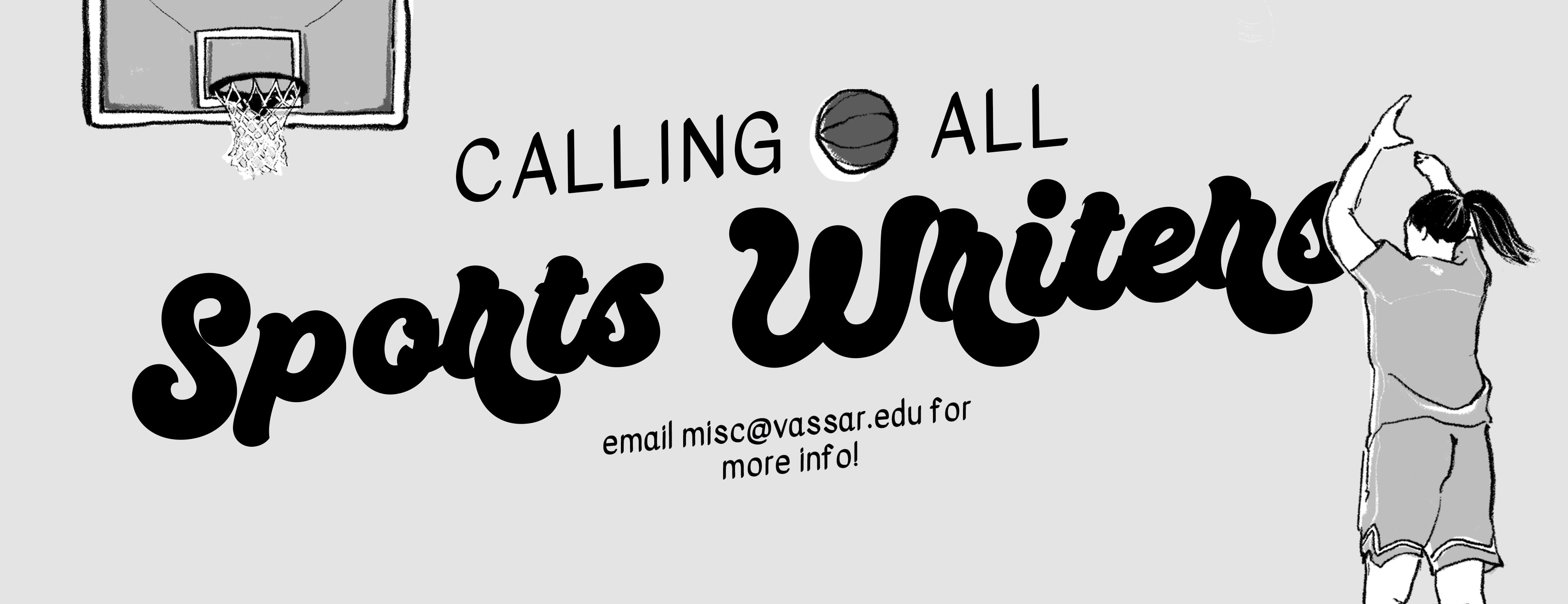
League One Volleyball: Transforming the game in the U.S.
Holland Kaplan Assistant Design Editor
In the United States, where sports like basketball, baseball and football dominate the professional landscape, volleyball has often struggled to secure a spot in the national spotlight. League One Volleyball (LOVB), however, is poised to change that narrative, offering new opportunities for athletes and transforming the sport’s presence in the United States.
LOVB, founded to elevate volleyball to a premier professional sport, represents a significant turning point for volleyball players in the U.S. Historically, aspiring professional volleyball players had limited options. American athletes seeking to play at the highest level often either pursued careers in the professional leagues in Europe, South America or Asia or transitioned to beach play on the AVP tour. While collegiate volleyball continues to thrive in the U.S., the absence of a domestic professional league has left a gap in the sport’s visibility and development, and LOVB seeks to fill it.
Launched in 2021, LOVB initially focused on developing youth programs and club systems nationwide. By fostering a strong foundation, the league aimed to create a pipeline of talent while building a community of volleyball enthusiasts. Now, as the league transitions into starting professional play in 2025, it brings with it the promise of stability, growth and a platform for American athletes to shine on home soil. Already, notable players such as Jordan Larson and Micha Hancock have signed on, lending credibility and star power to the league. Larson, an Olympic gold medalist and University of Nebraska alumna, has praised the league’s vision and its focus on growing the sport domestically.
LOVB transitioning into a professional league means that volleyball players in the U.S. no longer need to relocate overseas to pursue their dreams. LOVB will make waves as a professional league compared to its counterparts due to its strong focus on community engagement, providing health insurance, and a strong broadcasting deal with ESPN. This shift is monumental for several reasons. Playing domestically allows athletes to stay closer to their support systems while simultaneously enabling them to maintain greater visibility in their home market, increasing their chances of securing endorsements and building personal brands.

Professional leagues abroad often come with challenges such as language barriers, cultural adjustments and limited financial security for mid-tier players. LOVB aims to provide competitive salaries and benefits, ensuring that athletes can focus solely on their performance minus the financial restraint.
Beyond individual opportunities, LOVB has the potential to culturally reshape the volleyball landscape in profound ways. A professional league serves as an aspirational goal for young athletes. With LOVB’s commitment to integrating professional teams with YouTube programs, more children and teenagers are likely to pick up the sport, knowing there is a clear path to a professional career. The ability to watch matches live or on accessible platforms will bring fans closer to the action.
LOVB’s emphasis on storytelling and player visibility will help build a loyal fan base, akin to what leagues like the Women’s National Basketball League (WNBA) and the Nation-
al Women’s Soccer League (NWSL) have done for basketball and soccer. Volleyball is becoming one of the most popular sports globally, as the number of girls high school volleyball players hit a high of 470,488 in 2022-23, making it the second most popular after outdoor track and field. However, it has not garnered the same respect or recognition as other sports. LOVB’s successes continue to elevate volleyball’s status, demonstrating that it deserves a place alongside more established sports.
While the promise of LOVB is exciting, there are challenges to address. Building a professional league from scratch requires significant financial investment, strong leadership and strategic marketing. Attracting and retaining fans in a competitive sports market is crucial. Additionally, maintaining the balance between grassroots and professional growth will require careful planning. Another hurdle lies in convincing the broader
sports audience to invest their time and energy in a traditionally underrepresented sport. However, the rising popularity of volleyball at the collegiate and Olympic levels provides a strong foundation upon which to build. LOVB is more than just a professional league; it is a movement. By providing a platform for elite athletes while elevating, investing in and inspiring the next generation, the league has the potential to revolutionize volleyball in the United States. The league’s focus on community, accessibility and excellence aligns with the values of the sport, making it a promising endeavor for players and fans alike. As LOVB grows, it is not just volleyball players who stand to benefit. The league’s success could inspire similar initiatives in other underrepresented sports, proving that with the right investment and vision, any sport can capture the hearts of a nation. For volleyball players in the U.S., LOVB is not just a new league—it is the dawn of a new era.
Skiing legend Lindsey Vonn eyes Olympic comeback
Casey McMenamin Assistant Sports Editor
Six years ago, then 33-year-old skiing legend Lindsey Vonn came to a devastating conclusion: She would have to retire from her racing career. Her persistent knee pain had become too much, and if she wanted to live an active lifestyle later in life, she would have to give up her dream. Her knee pain, however, did not magically go away once she retired from the slopes. “I was doing more therapy in retirement than I was when I was racing,” Vonn told the BBC. “I did it for my own longevity, for my own well-being.” Despite her newfound free time, Vonn missed the adrenaline rush, the danger and the high speeds of an icy course that she had been mastering since the time she was a toddler. “Life as a ski racer is pretty simple,” she reflected. “You work hard, you do the right thing, and when you’re in the start gate, you just want to go fast. I missed that.” Vonn grew tired of playing tennis, writing her memoirs
and focusing on her foundation. She missed her true passion of skiing, so she started plotting yet another comeback to the sport.
This is not the first time that Vonn has returned from injury. After a crash in the super-G event of the 2013 World Championship caused Vonn to tear her anterior cruciate ligament (ACL) and medial collateral ligament (MCL) in her right knee, Vonn missed most of the 2013 season and almost all of the 2014 season. Despite multiple reinjuries and setbacks that forced Vonn to miss the 2014 Olympics, Vonn clawed her way back to the top. In just her second race back from injury, she won the Women’s World Cup downhill race at Lake Louise, Alberta. A year later, she overtook Austrian Annemarie Moser-Proell for the most World Cup wins ever at the time.
Vonn’s latest comeback, however, will be her most challenging yet. In April of 2024, Vonn underwent a cutting-edge knee replacement surgery. The surgery involved the help of a robot, with knee specialist Martin
Roche cutting part of the bone in Vonn’s right knee and inserting two titanium pieces in its place. With her new titanium knee, Vonn is doing things she has not been able to do in years, and most importantly, the pain has gone. “I’m skiing without thinking about my knee,” Vonn told the Associated Press (AP). “So, it’s been a long time that I felt this good.”
Vonn has an uphill battle ahead of her. The field is stronger and faster than ever. In the seven races since her return, Vonn has failed to podium in a single one, and she failed to finish in two races. Most notably, in the super-G event at Cortina d’Ampezzo, Vonn was on pace for a top-five finish through the first two checkpoints before her skis clicked together and she lost her balance. Unfortunately, Vonn received a DNF, but more importantly, she left Milan uninjured with glimpses of her potential. Cortina d’Ampezzo is the home of the 2026 Olympics and also one of Vonn’s best stops on the circuit. Vonn holds the record with 12 wins at Cortina. Most recently, the four-time world cup
champion regained her footing, placing 13th in the super-G event in Garmisch-Partenkirchen, Germany, on Sunday, Jan. 26. Vonn has a long way to go before the 2026 Olympics, and crashes are a part of the journey. Patrick Riml, Vonn’s former coach, knows this. “She just needs to get more miles in,” he told the AP. And Vonn is no stranger to setbacks. On her quest to become the oldest woman to win a World Cup race and make the U.S. Olympic squad for a fifth time, there are sure to be more obstacles for Vonn to overcome. Despite the rough terrain ahead and the odds stacked against her—her age, the critics and the fears of another injury— Vonn carries on. Vonn’s comeback story is not just about racing, for there is no race that Vonn has yet to win and no record she has yet to break. Her resurgence is about proving to herself and the world that with resilience, determination and just the right amount of titanium, anything is possible. “My new knee has given me a second chance,” she reflected. “Life is short, so I’m going to take it.”
Brewers Ballin’: Gelb’s sharp shooting elevates Brewers, again
Our goal with Brewers Ballin’ is to feature Vassar athletes who starred for their team the week previous to publishing. If you would like to nominate an athlete, please email hfrance@vassar.edu.
To
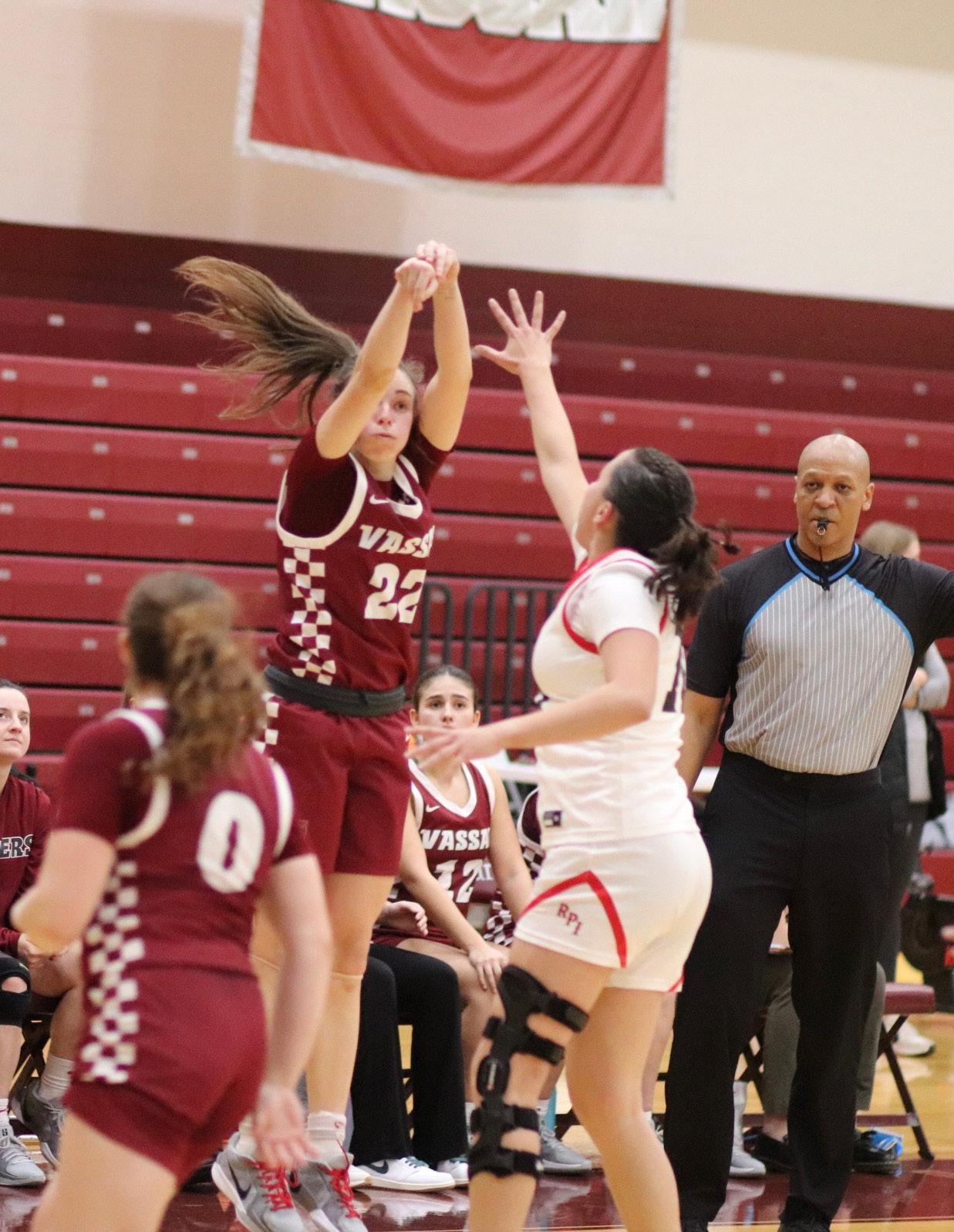
Brewers Ballin’
Name: Tova Gelb
Year: Senior
Team: Women’s Basketball
Stats: Gelb was on fire in the Brewers’ home victories over Clarkson and St. Lawrence, averaging 23.0 points per game on 63 percent shooting, including a phenomenal 62.5 percent from three-point range. Against Clarkson, she put up a near-flawless 26 points on 9-10 shooting, while adding four rebounds and five steals in a commanding 77-47 Liberty League win. Gelb followed up this performance with a double-double that included 20 points, 10 boards and three steals in a 77-58 victory over St. Lawrence. Gelb currently leads the Liberty League in scoring (17.8 PPG), rebounding (10.2 RPG), and steals (2.6 SPG) while ranking in the top 10 across multiple other statistical categories. With performances like these, she’s proving to be the heartbeat of the Brewers’ success this season.
Statement: “Overall, it’s been a great season with a hardworking, dedicated, group of people. Our coaches put together a challenging schedule which included playing multiple top-25 opponents, preparing us to be successful in competitive league play this season. It’s been a fun journey and we are excited to leave it all on the floor for the rest of league play and the League championship tournament.”
Recently in Vassar Brewers sports
Zheng aggregates honors
Shawn Zheng ’28 earned his second straight UVC rookie of the week honor. The freshman outside is second on the team in kills with 64.
Men’s basketball continues win streak
The Brewers have won four straight games after a 66-65 second half comeback win over St. Lawrence University on Feb. 2.
Men’s Swim & Dive earn critical finish at Skidmore Sprints
The Men’s Swimming and Diving Team finished with 456.5 points and in second-place on Saturday at the race, the final test before the 2025 Liberty League Championship.
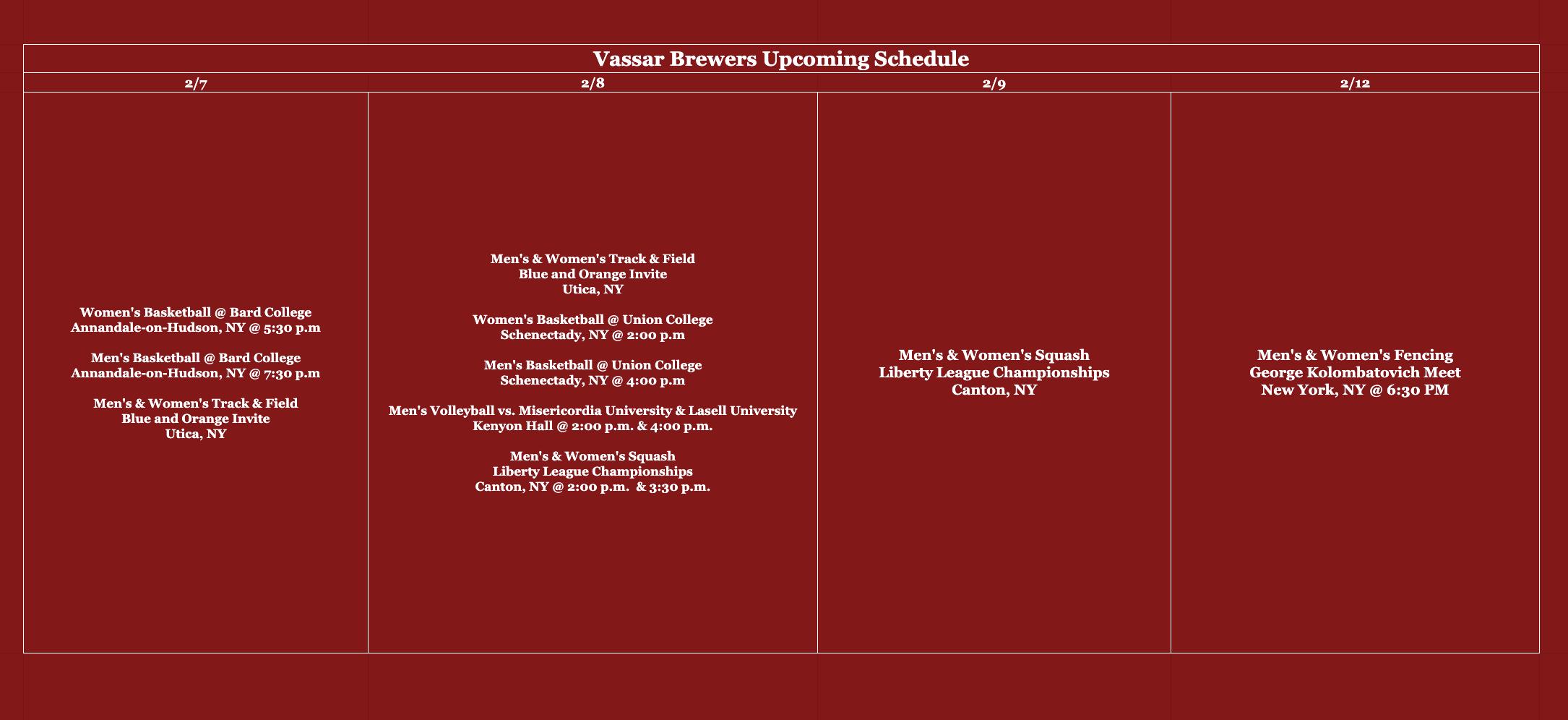
GAMES
Category Match
By Sadie Keesbury
In the word bank below, there are 16 words that belong to four categories. Each word belongs to only one category. You don’t know which words belong together, nor do you know what the categories are! Try to find similarities between them, and place them into four categories below. Answers (which words belong together, as well as the categories they belong to) will be revealed in next week’s issue. Have fun!
Example category:
1: Toyota Car Models COROLLA PRIUS TACOMA HIGHLANDER
WORD BANK
PALM NAILS FINGERS
KNUCKLES AMY ROSE
OUNCES BOLTS SHOTS
PINE OAK SHADOW PINTS
DOWELS ELM TAILS SCREWS

Answers to last week’s puzzles:
“Welcome Back Puzzle”
By Sadie Keesbury
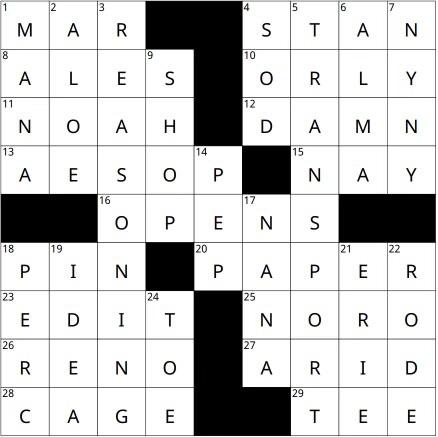
“Category Match”
By Sadie Keesbury
Parts of a teapot: SPOUT, HANDLE, LID, HOLE
Board games: CHESS, GO, SORRY, CATAN Road signs: STOP, YIELD, ONE WAY, DETOUR
Black and white things: ZEBRA, NEWSPAPER, PENGUIN, BARCODE
The Miscellany Crossword
OSCARBATE
By Felix Mundy-Mancino

ACROSS
1. Five plus five
4. Utterances of Monty Python’s annoying knights
7. Woodcutting implement
10. Pop
13. Mr. Blue Sky grp.
14. “Great Expectations” girl 16. Its capital is in D.C. 17. Oft derided Oscar nominee: “offending both the Mexican and Trans communities”
19. Pen tip
20. Broncos great John
21. Subject of Ralph Fiennes film: “Intrigue in the Vatican”
23. Bank holdings abbr.
26. “The King’s Speech” director
30. Occurring in stages
32. Children’s author Asquith
33. Bowling alley?
34. Fond du ___, Wisconsin
35. Creates
37. One under par
38. A Complete ___: “Timothée Cha-
lamet’s take on a folk hero”
40. Author of “Their Eyes Were Watching God”
42. Athenian lawgiver
43. “Would you like to see ___”, waiter utterance
45. Five minus three
46. Observer
47. Spanish baller Gasol
48. Actress Madeleine et al.
50. The ___: “Gross, but so is life”
53. Gritty take on romance: “Intimate, funny, and heartbreaking depiction of sex work and aristocracy”
54. Squeezes (out)
55. Mother’s brother, in France
57. Tavern
59. 1987 R.E.M. hit, in France?
64. Comparative suffix
65. Dried grapes
66. Disallow
67. Devoid of moisture
68. Developmental disability abbr.
69. Red Sox great Mel
70. Acct. earnings
DOWN
1. Golf ball holder
2. Shade tree
3. “There’s ___ in team”
4. “Lost in Yonkers” playwright
5. Part of Caesar’s boast
6. Patron saint of a March holiday, colloquially
7. Camera type, briefly
8. First letter of many semitic languages
9. Up the ___, a bad situation
10. Second fantasy installment: “Thrilling experience of sound and spectacle”
11. “___ live and breathe”
12. 2010s dance fad
15. Pooh’s depressed friend
18. Allows
22. Indiana- or Minnea-
23. Highest marks
24. Japanese tea ceremony
25. Egg, facetiously
27. Israel’s Dayan
28. Foundation, often
29. City across the Rio Grande from McAllen
31. Parrot speak
36. “Wavin’ Flag” rapper
37. The ___: “Adrien Brody film about architecture”
39. Scandinavian language, to its speakers
41. Young ___ (tots)
44. Membrane around soft tissue
47. Turkish pooh-bahs
49. Travelled in America?
51. Aquarium fish
52. Morricone
56. One in a hundred?
57. Auction action
58. ___ lingus, Irish airline
60. ___ al-Fitr
61. Kimono sash
62. Often suspicious transport vehicle
63. Tree being
